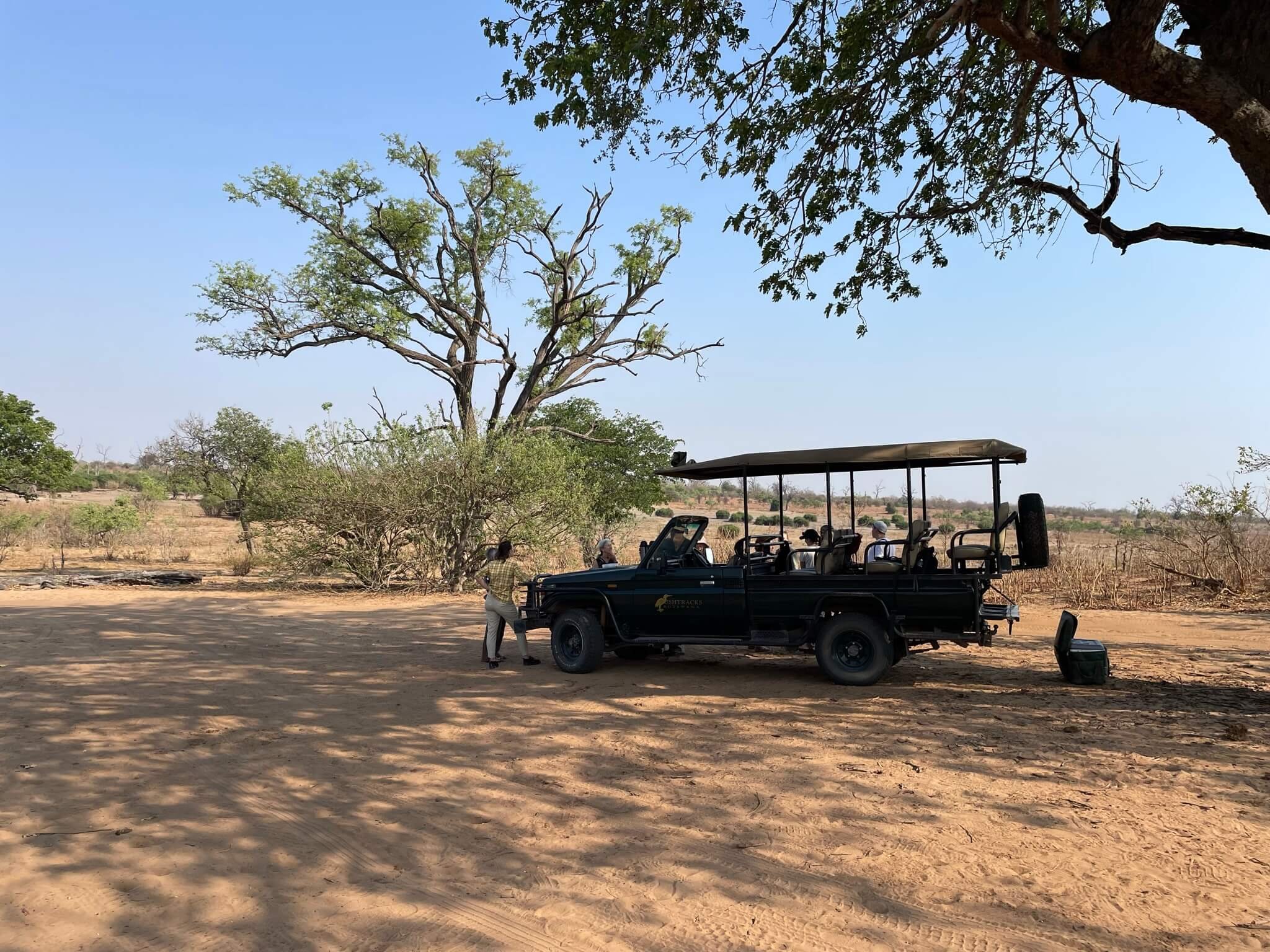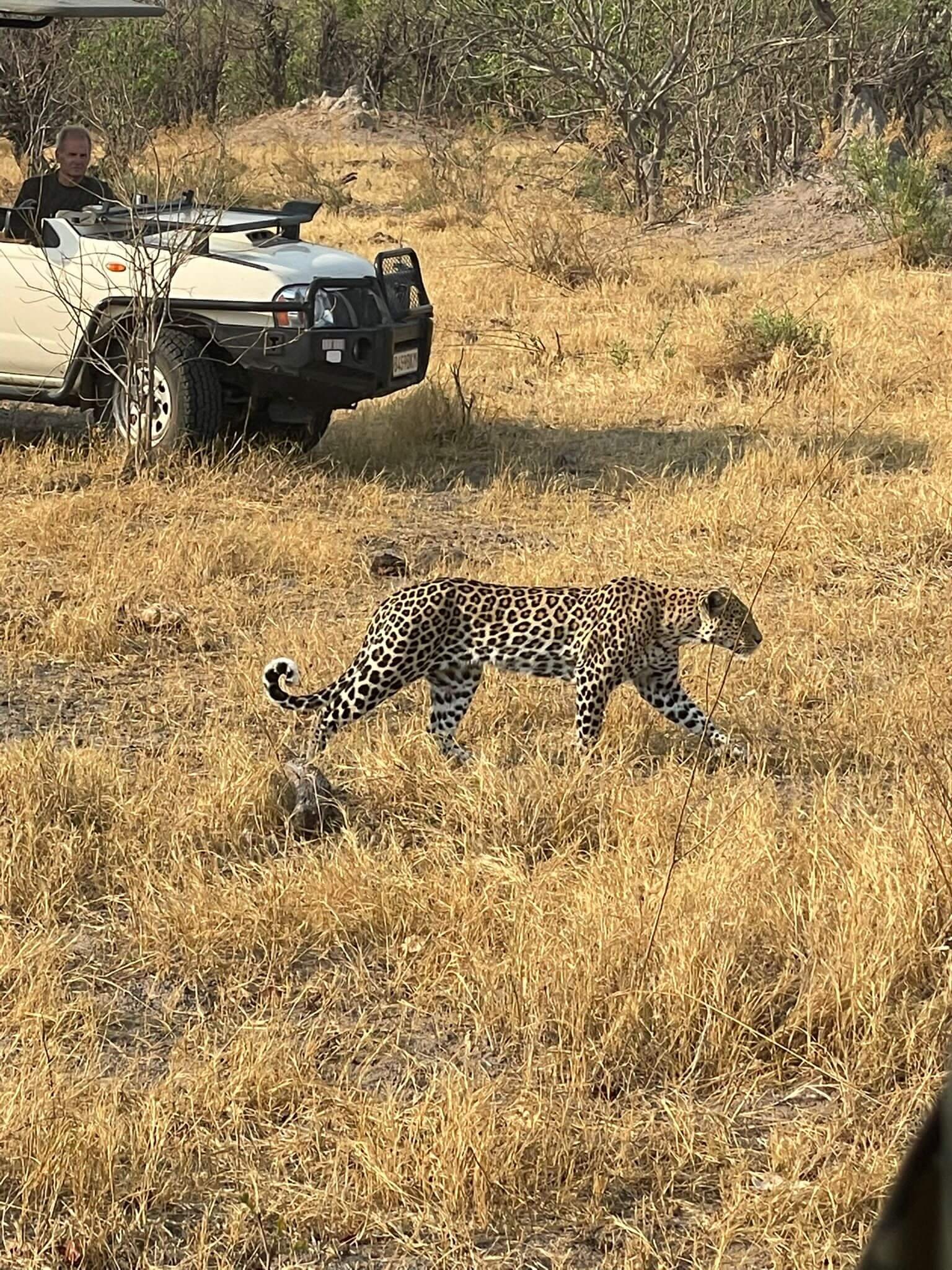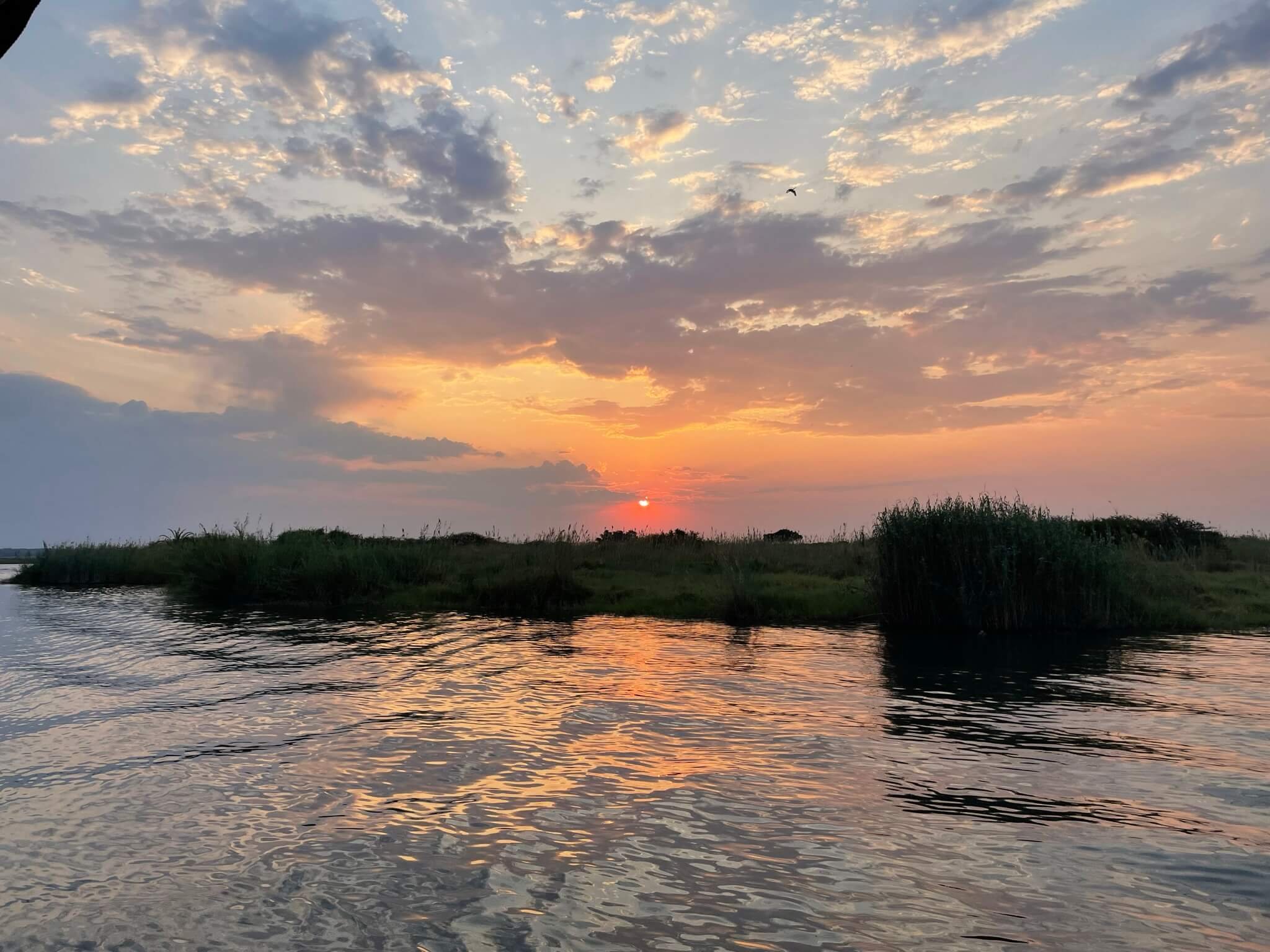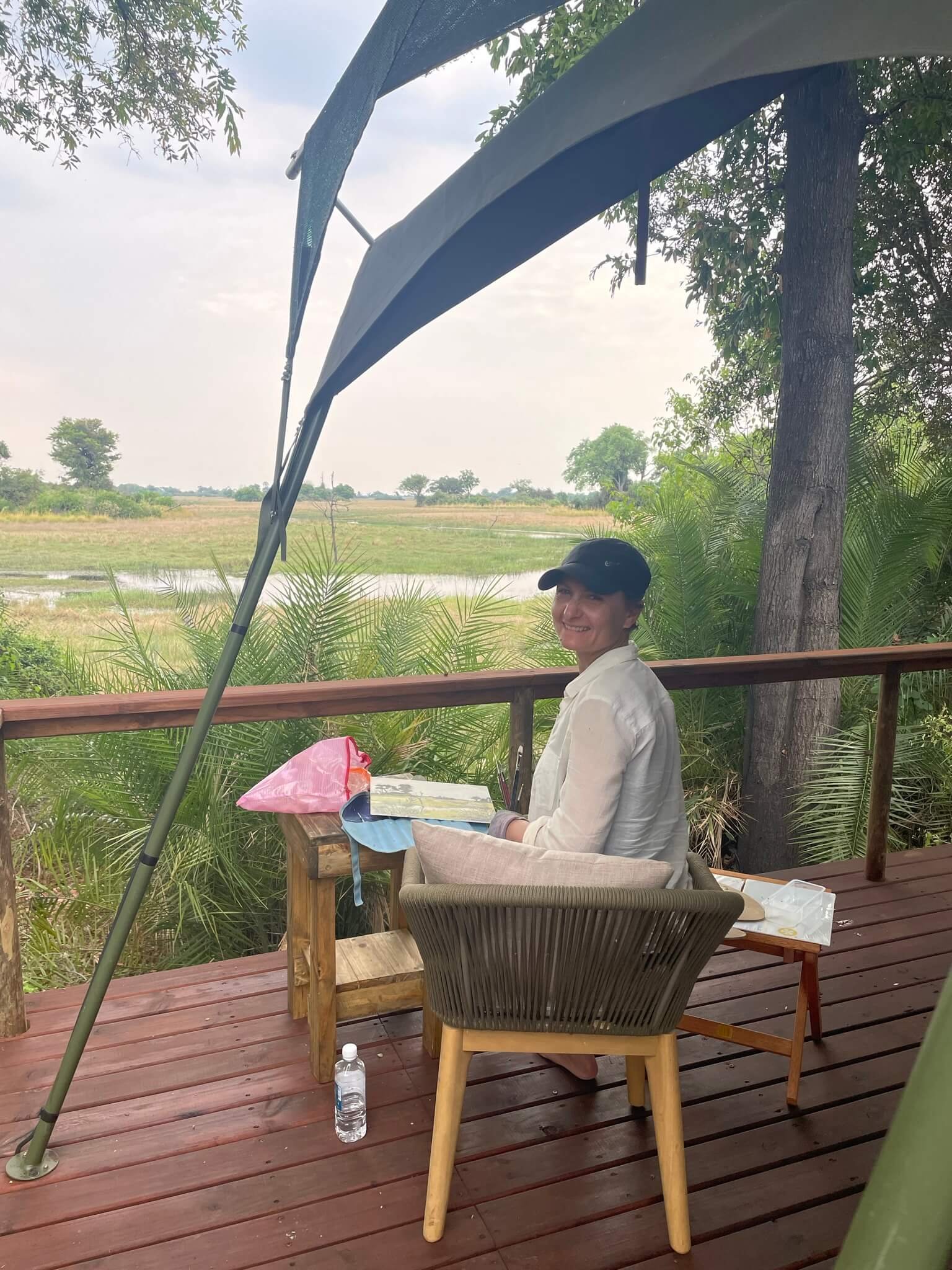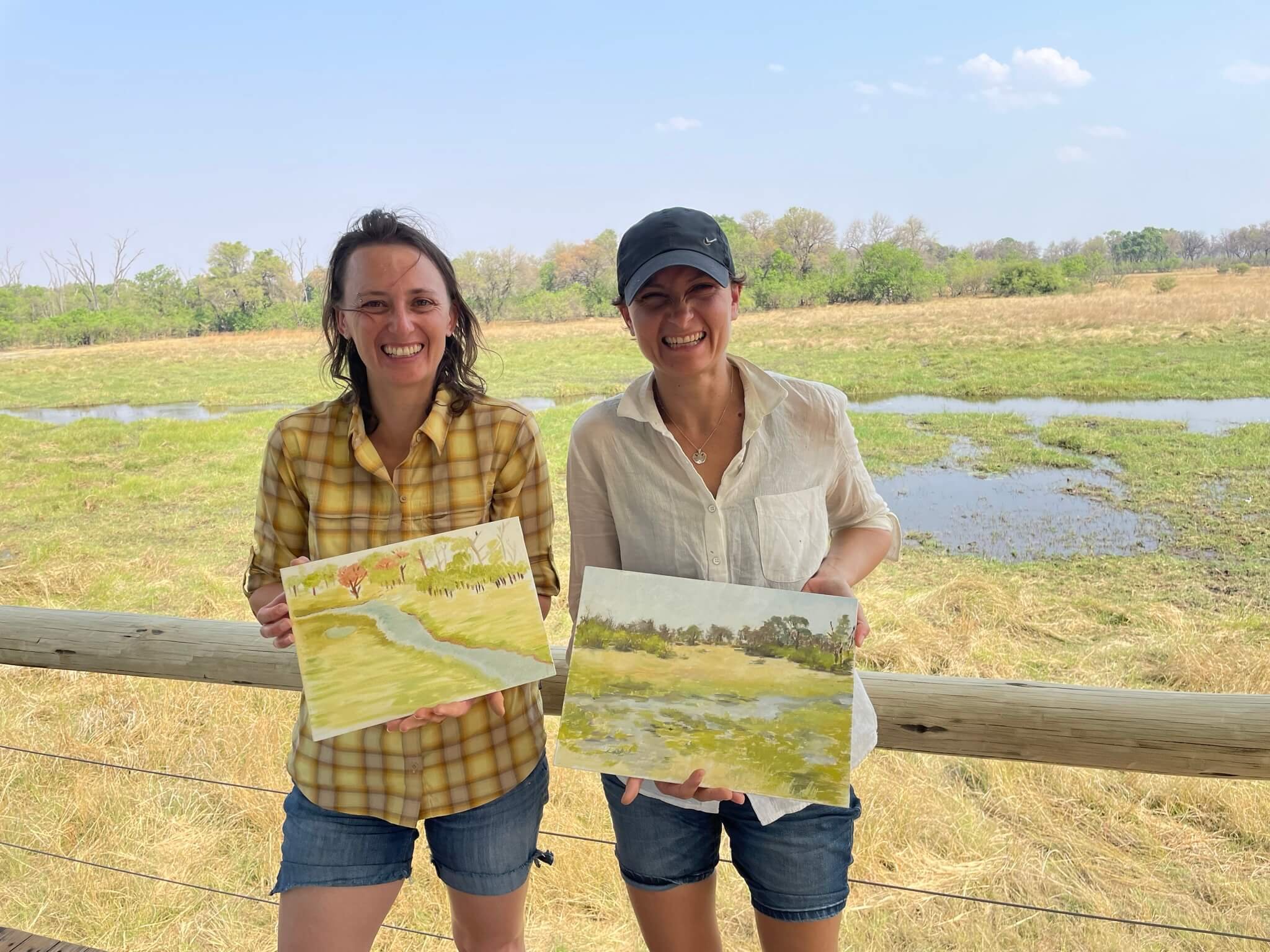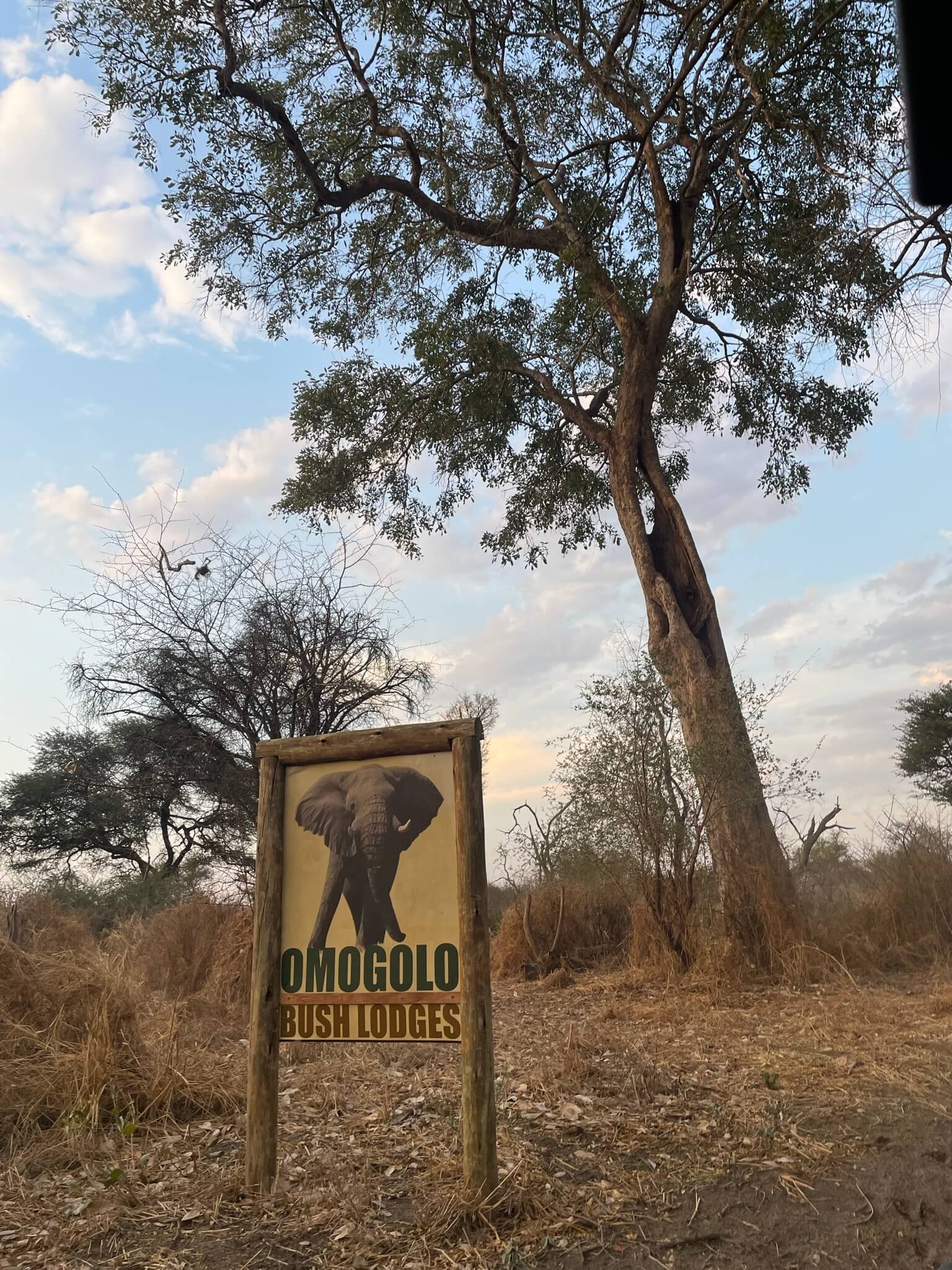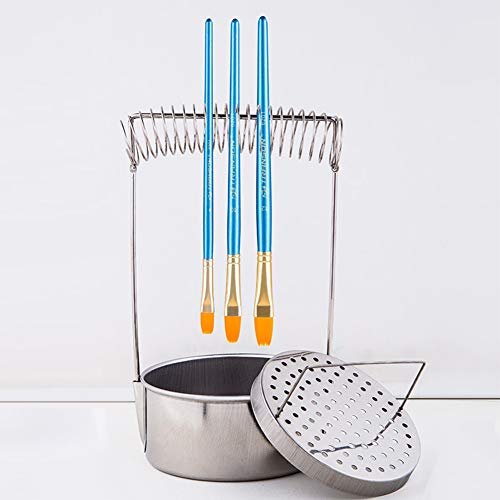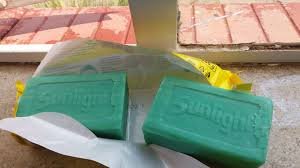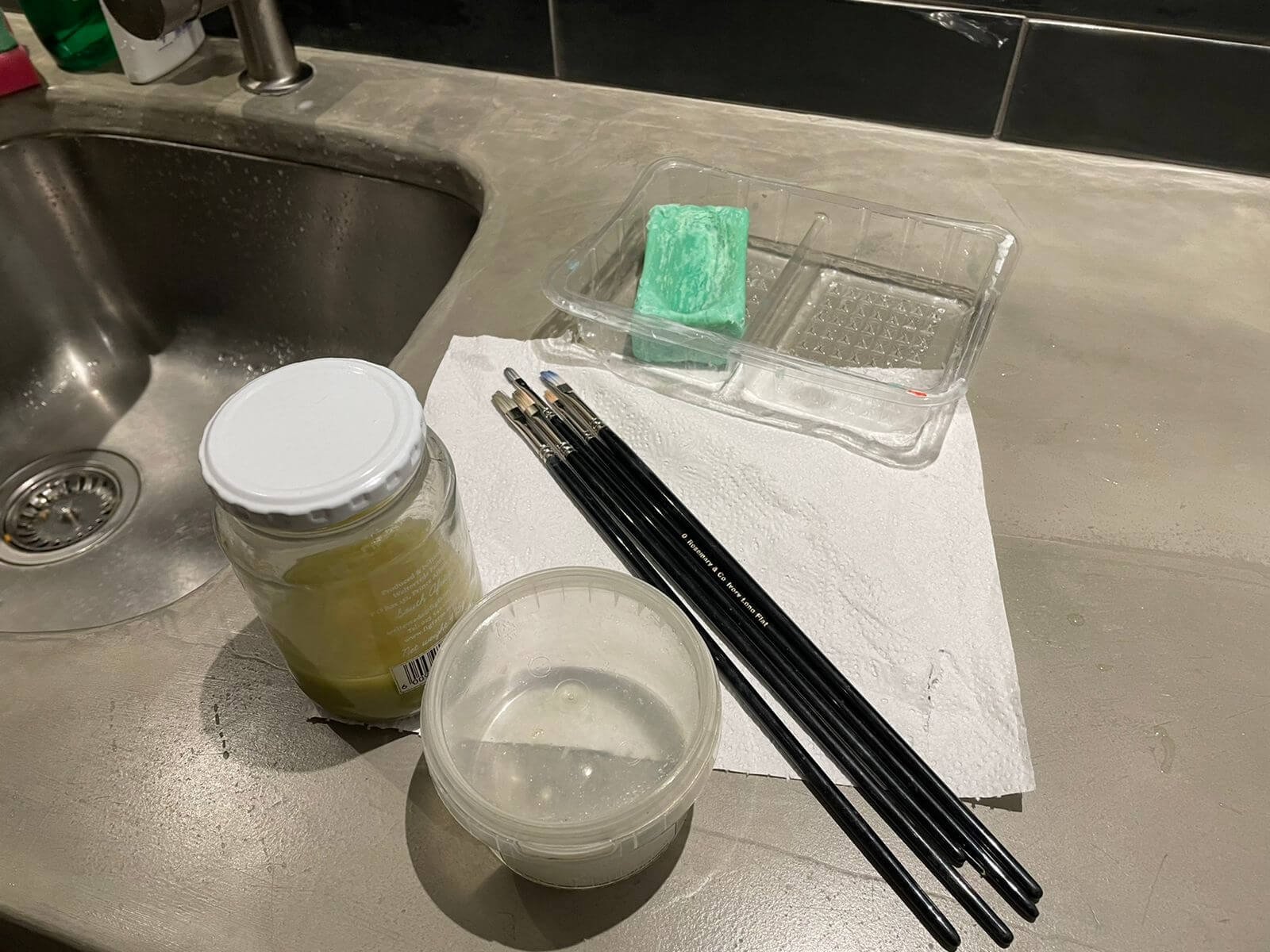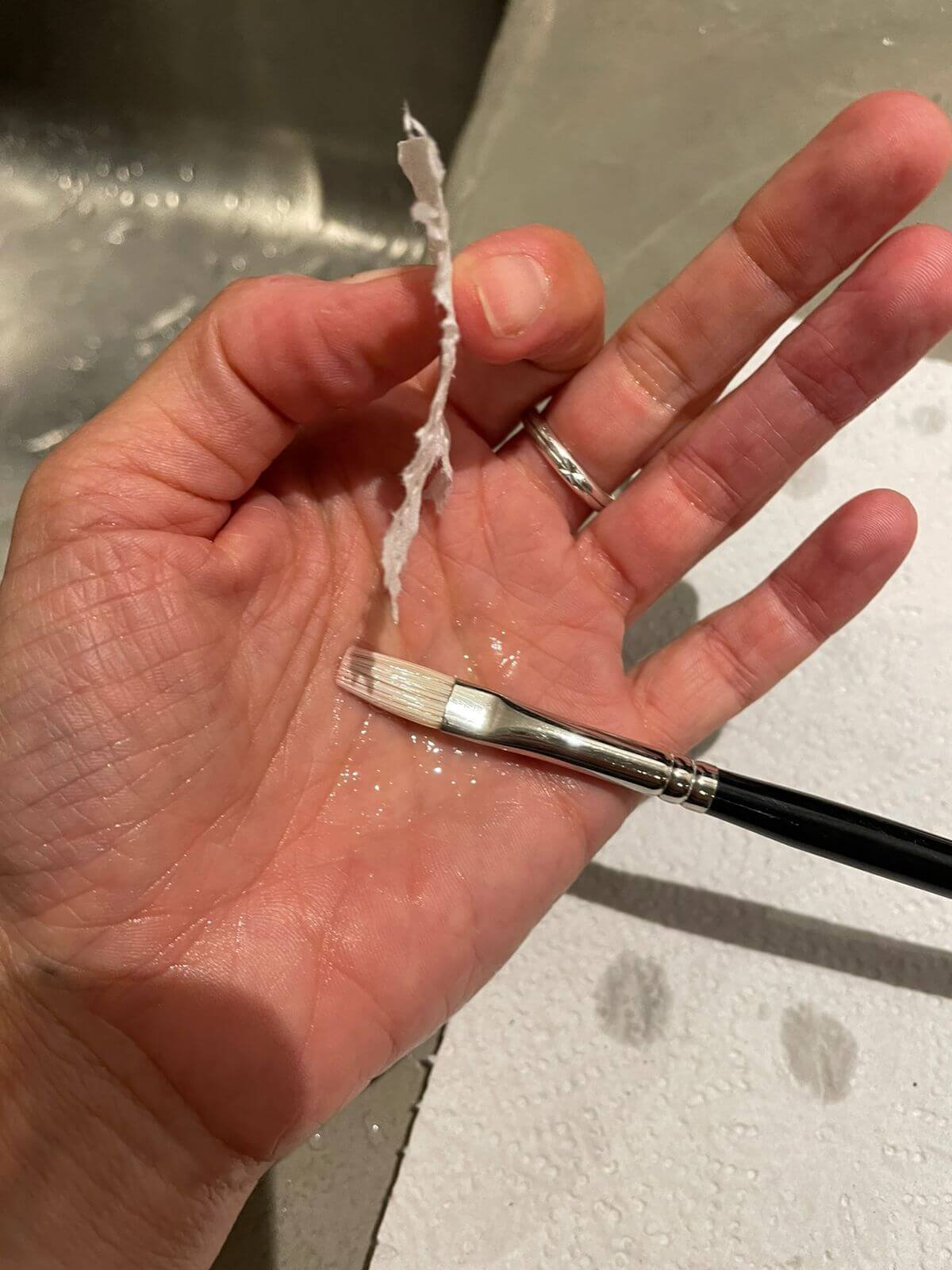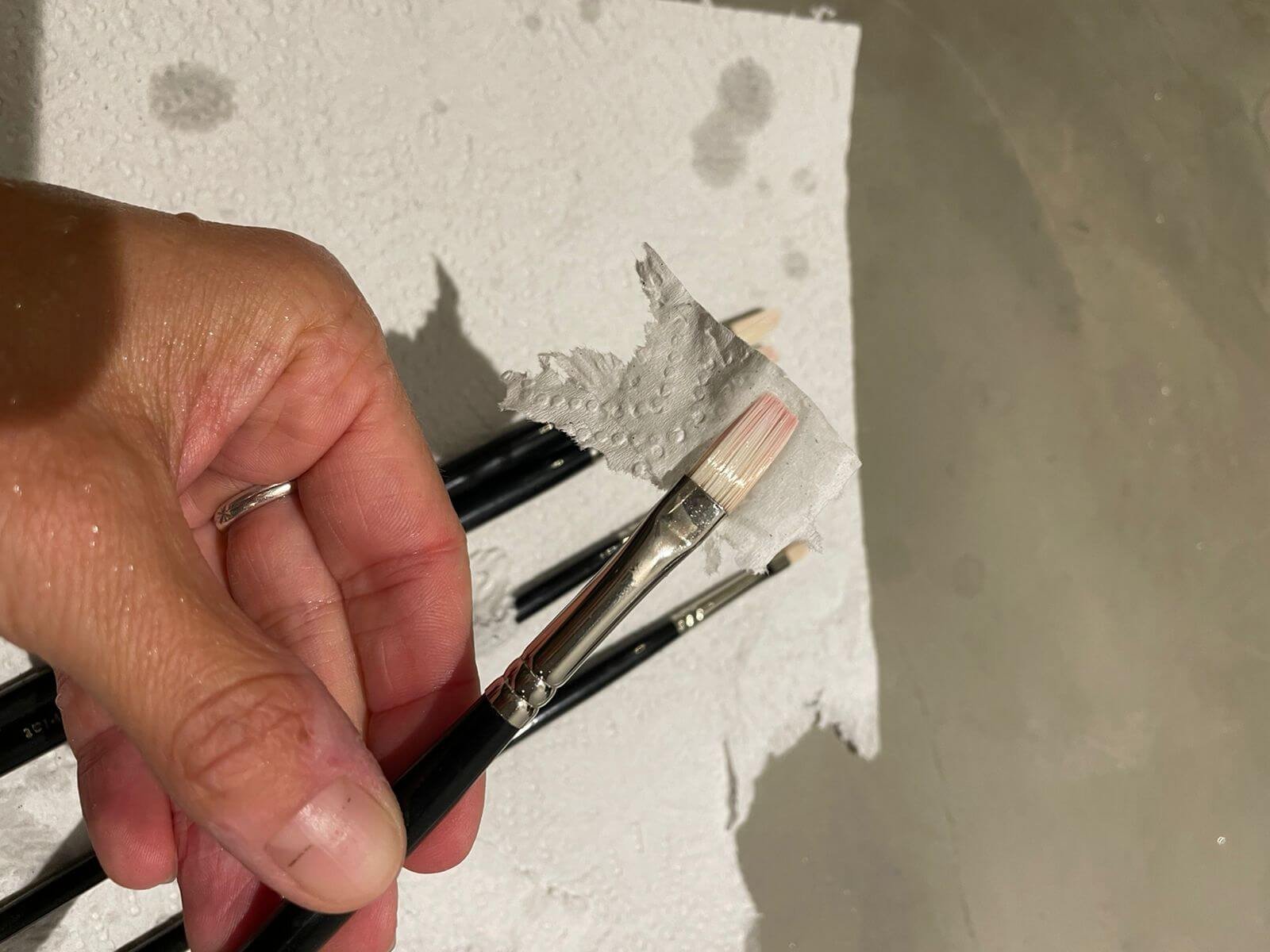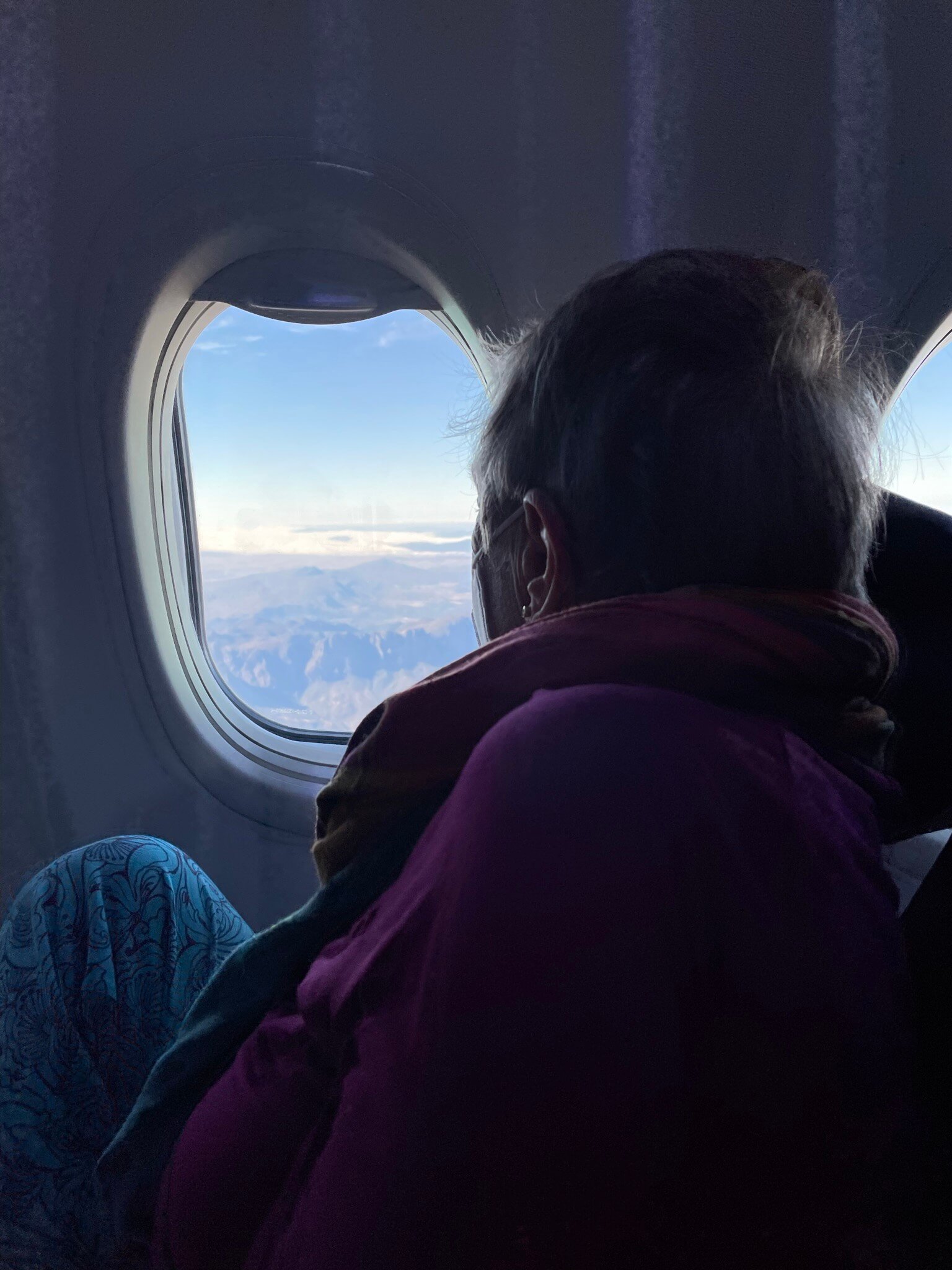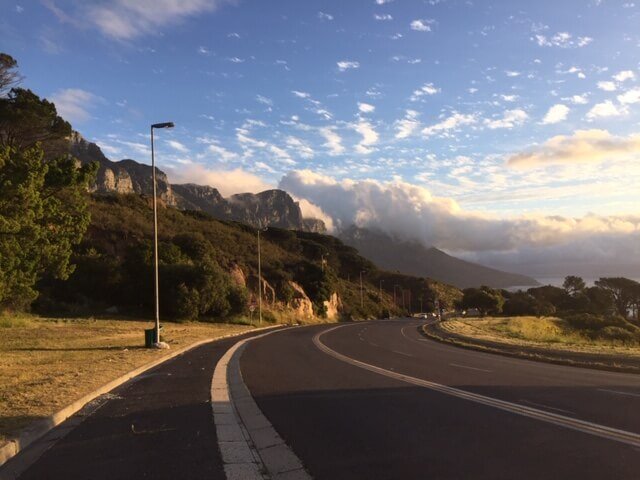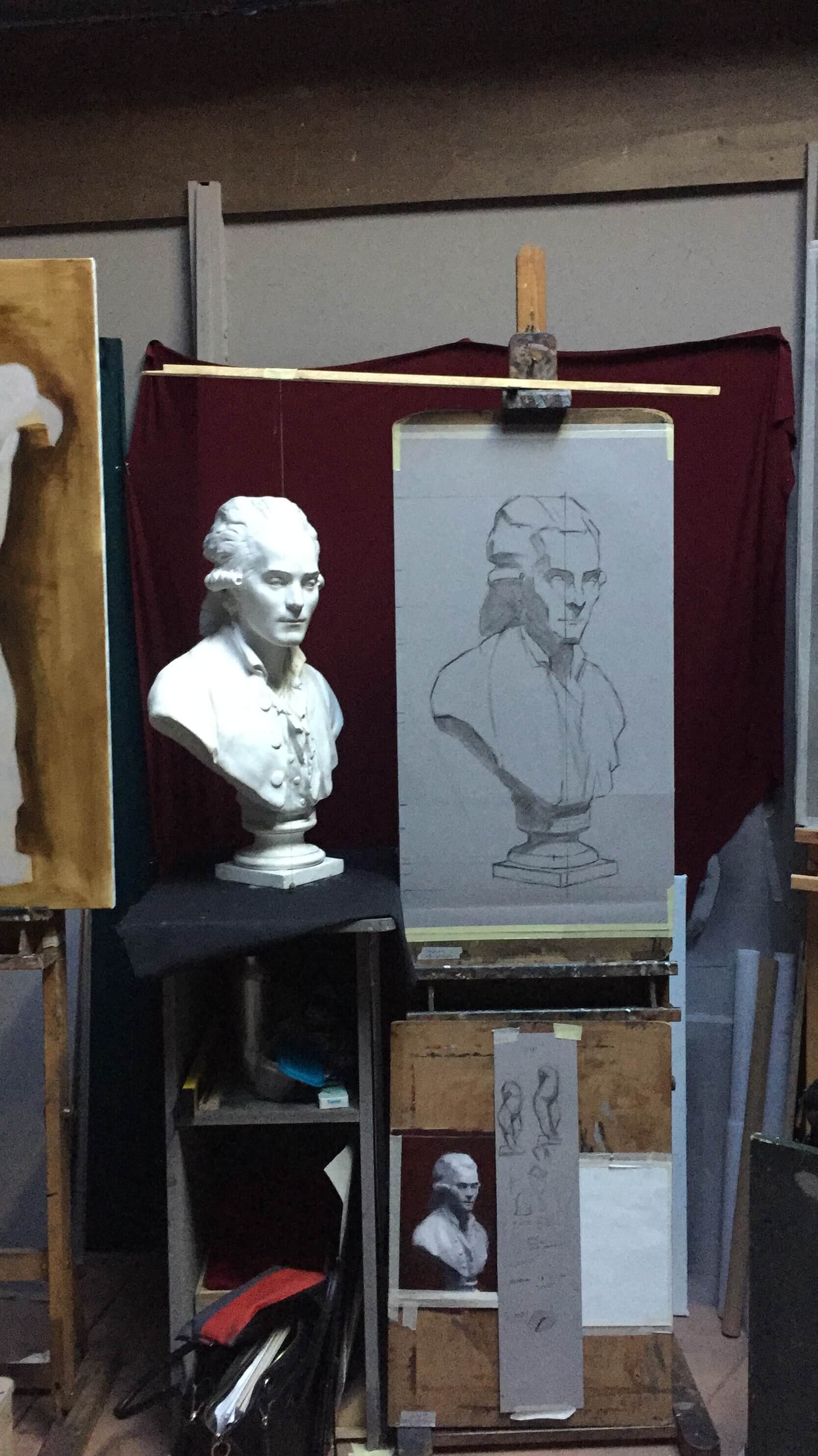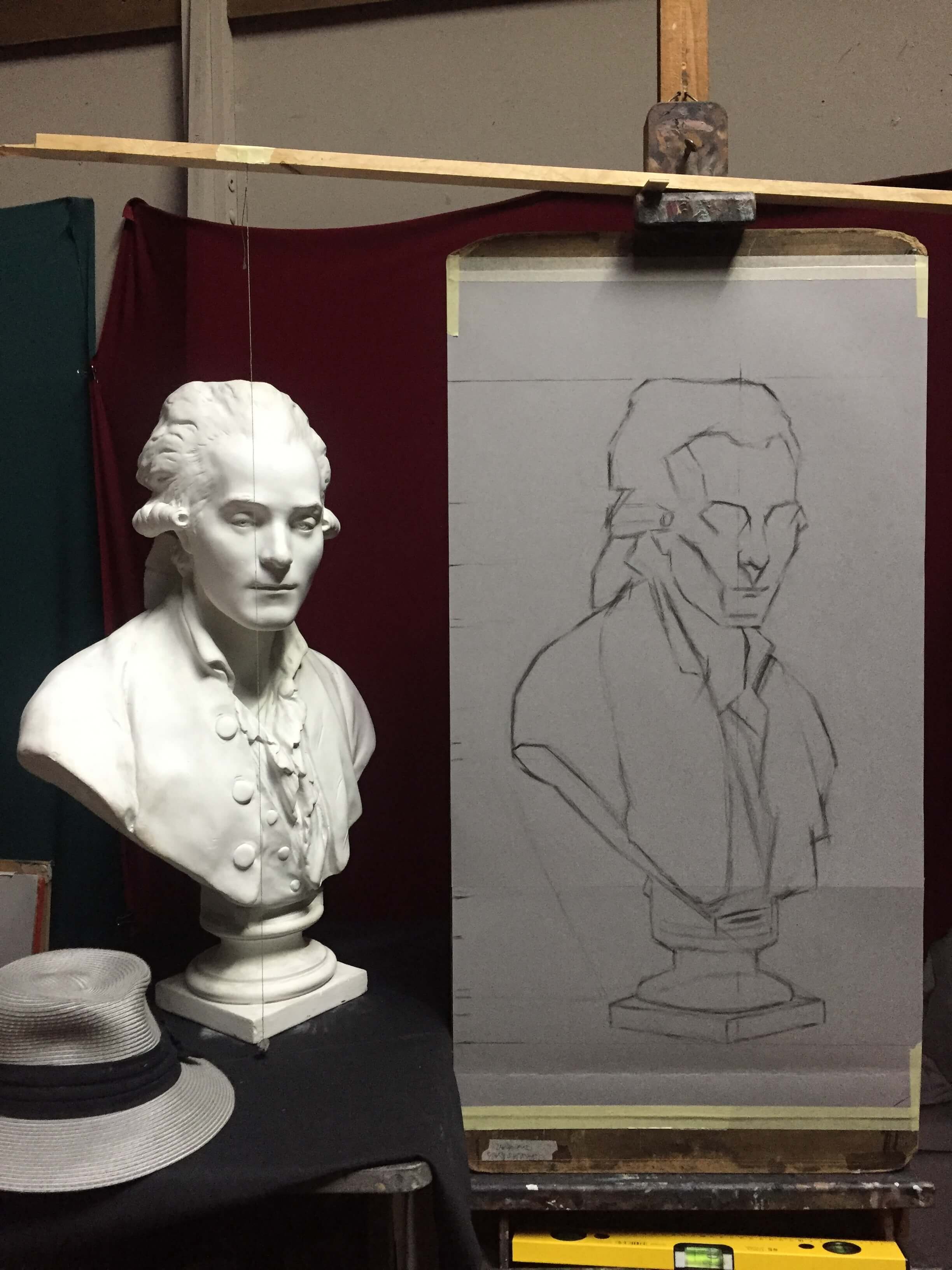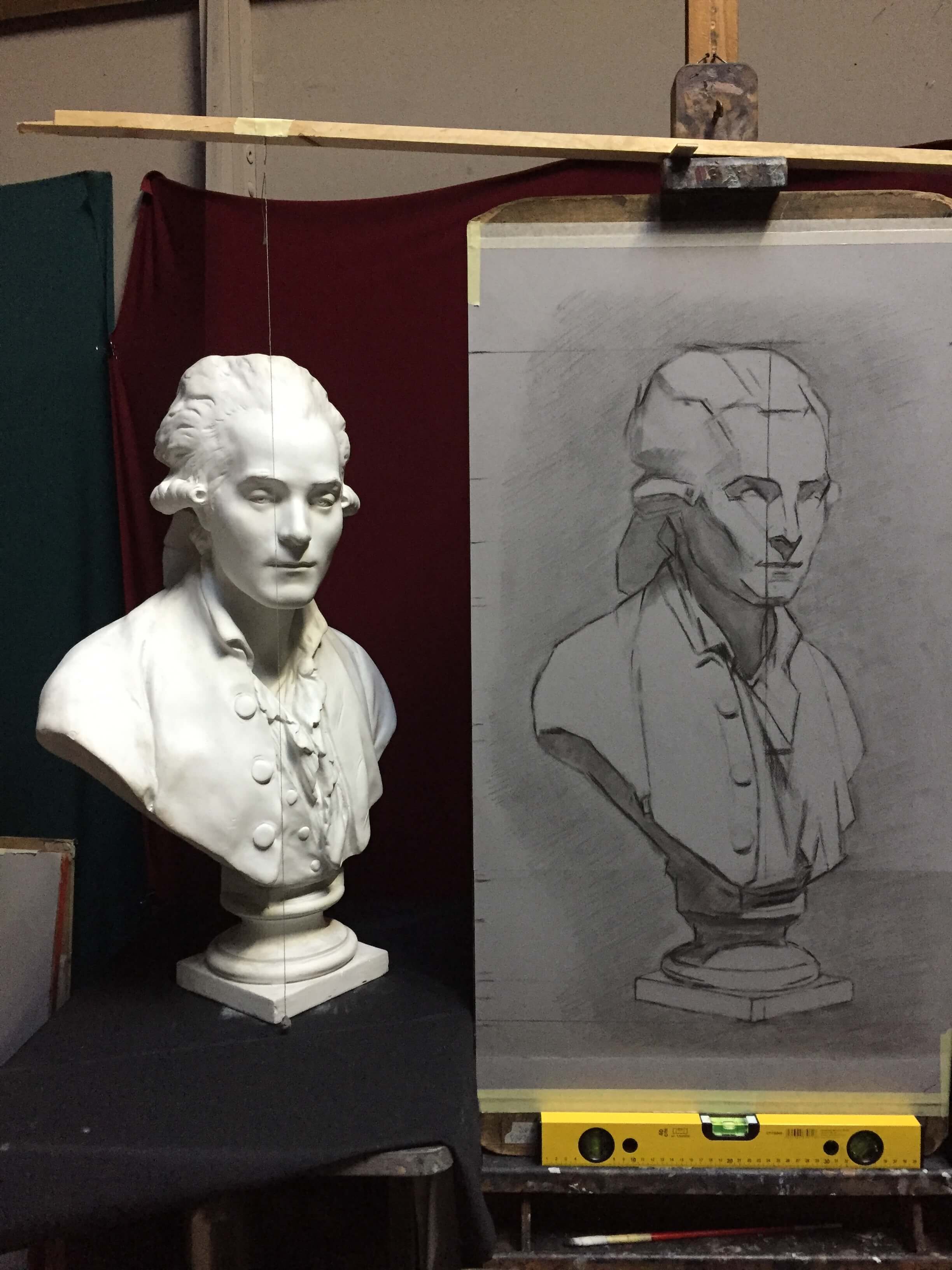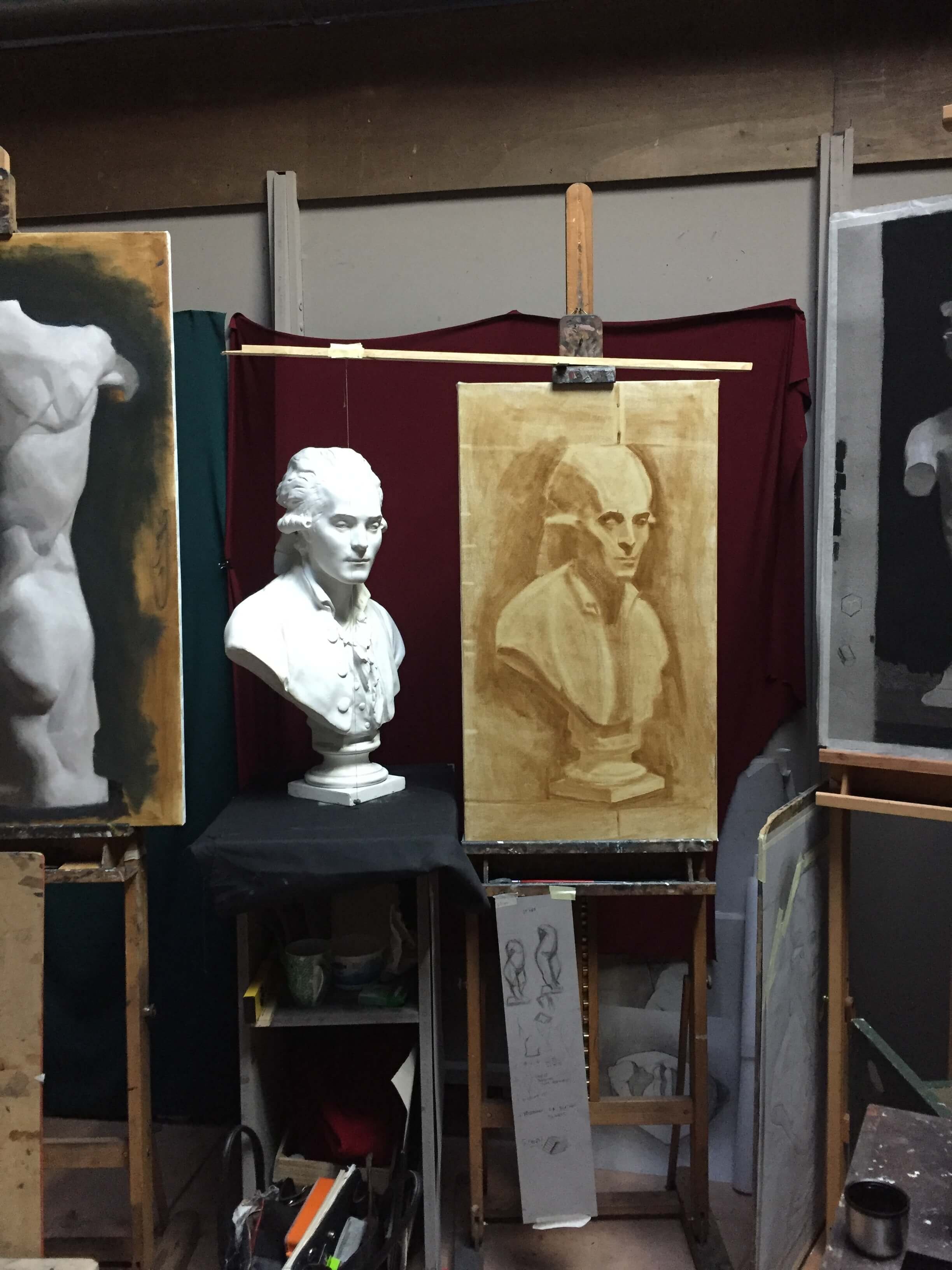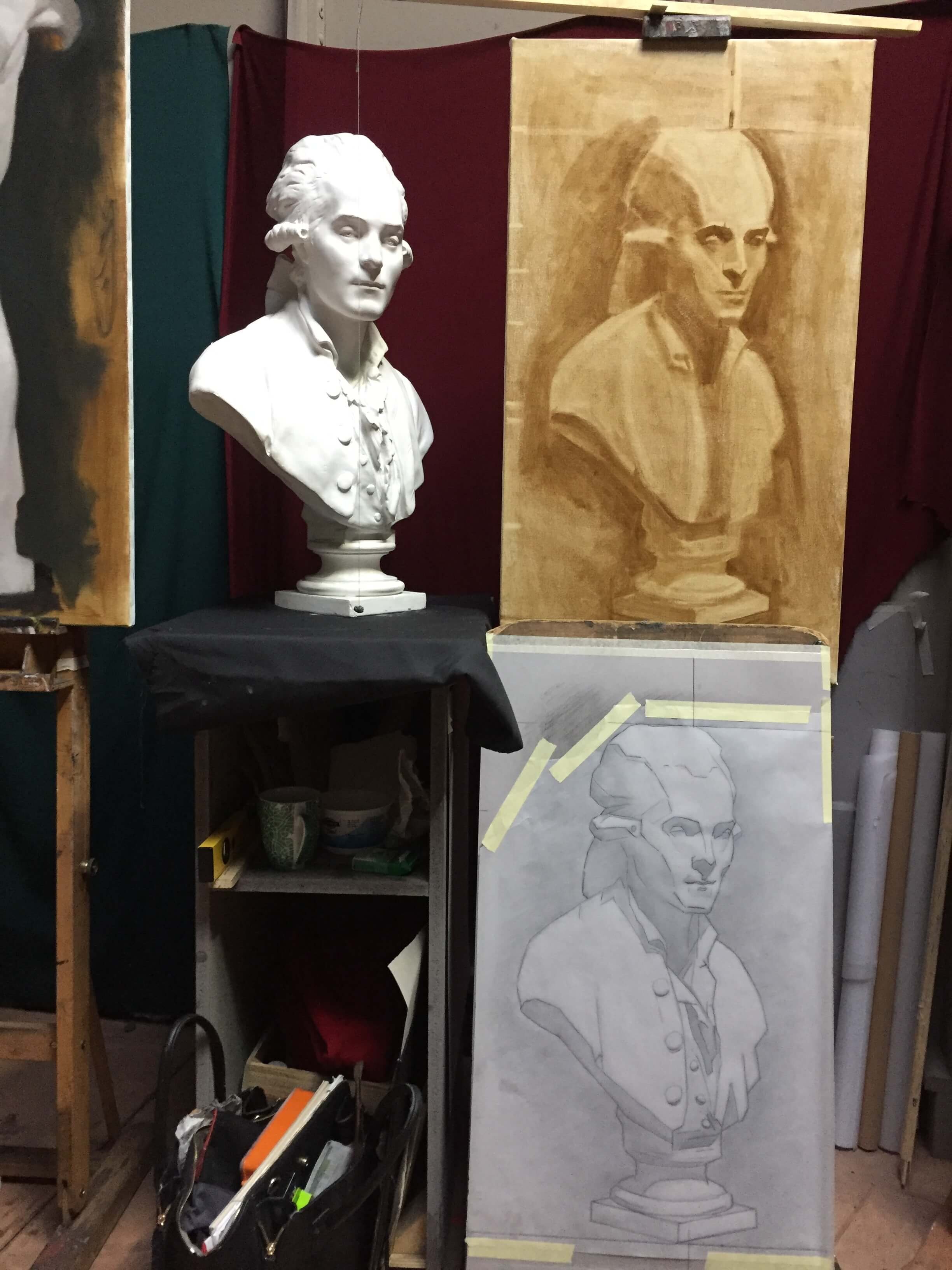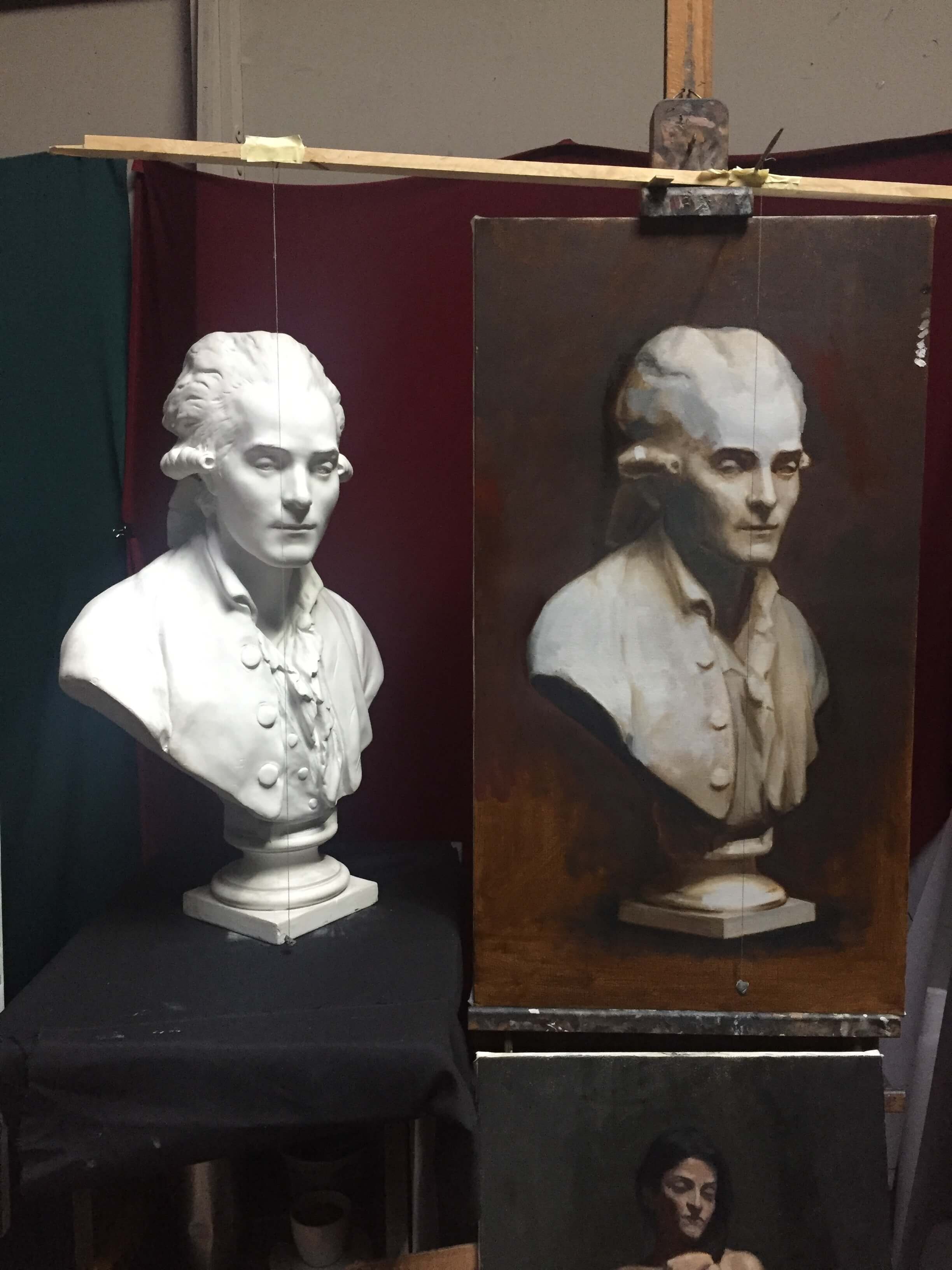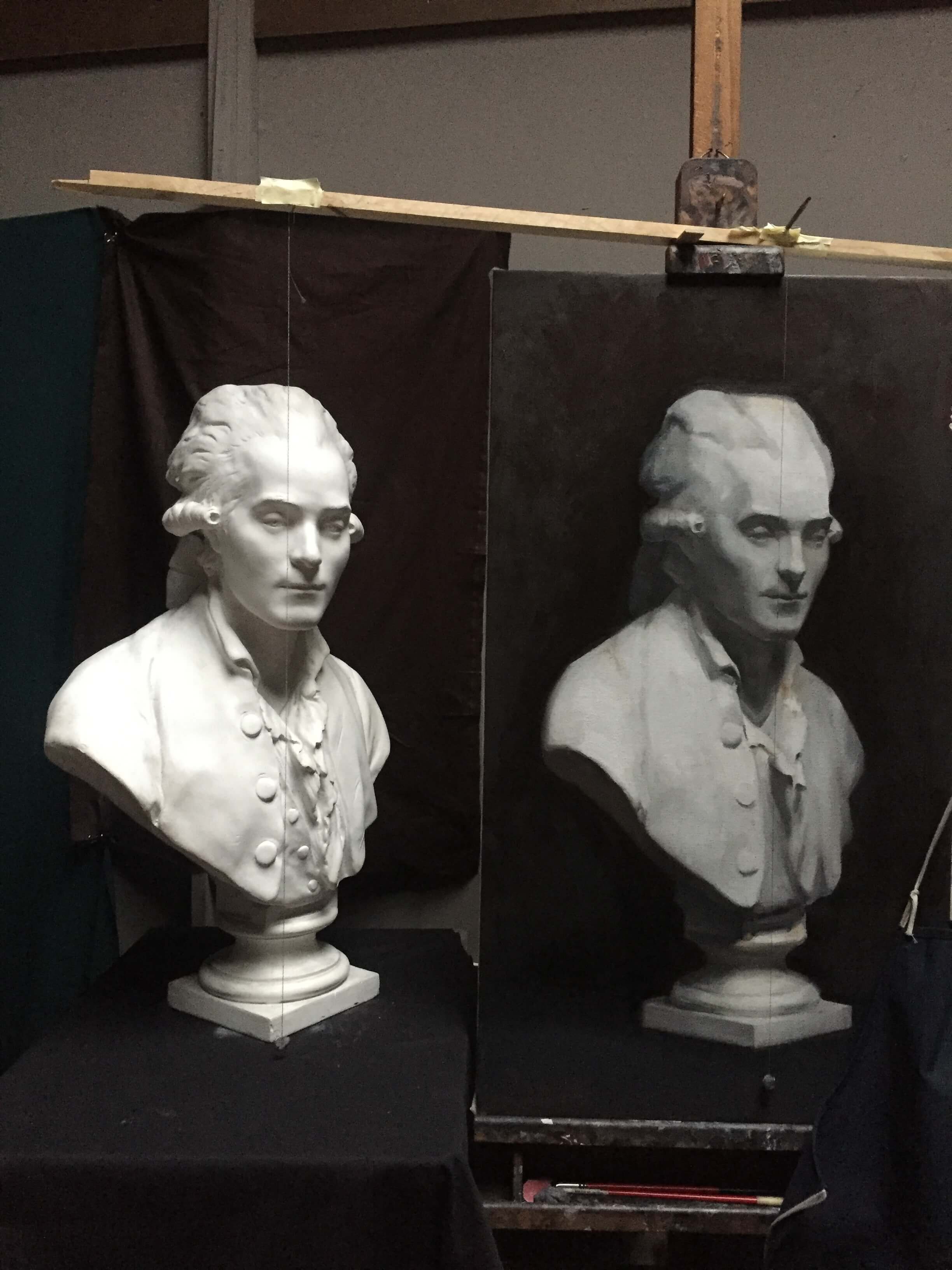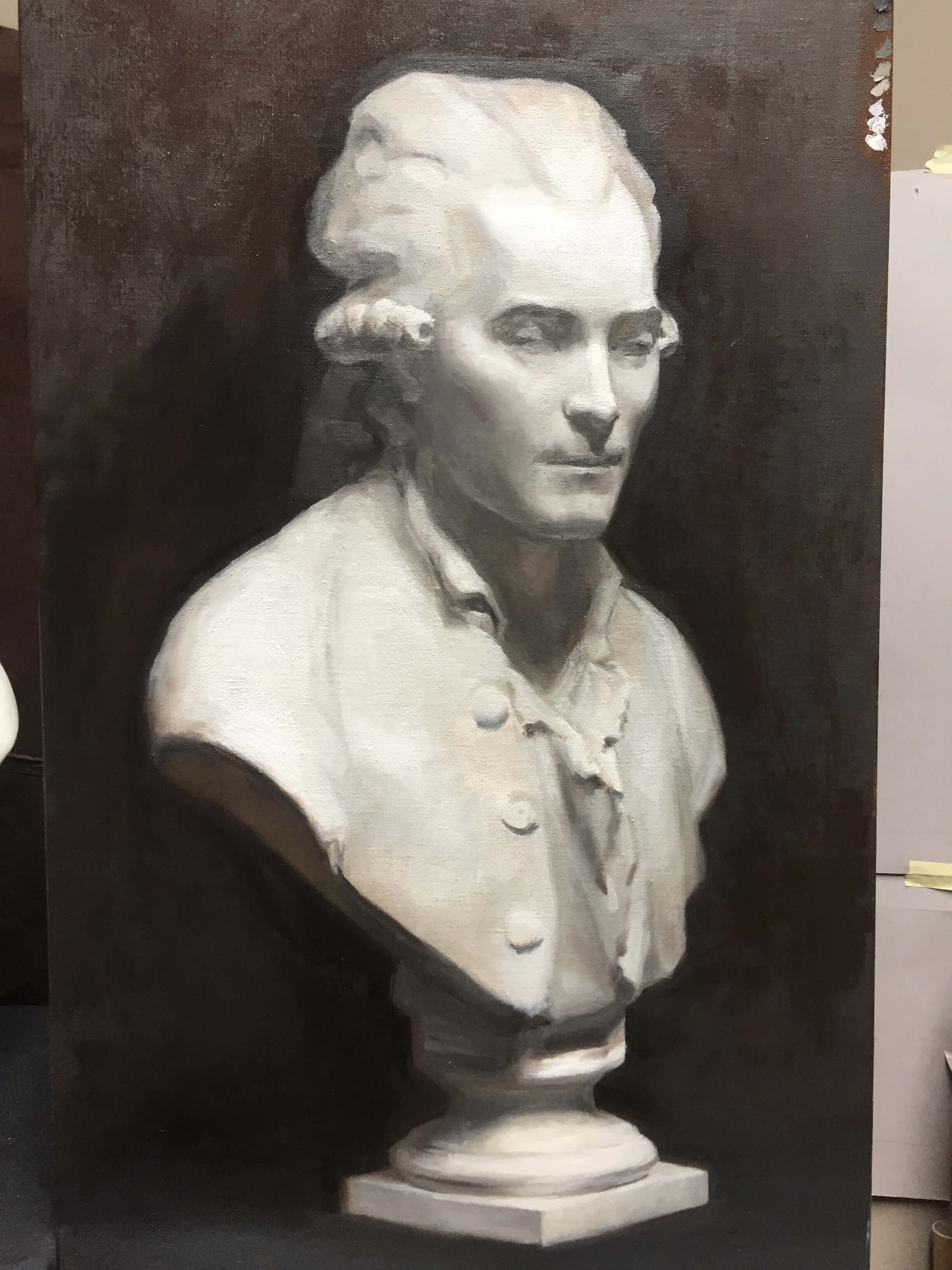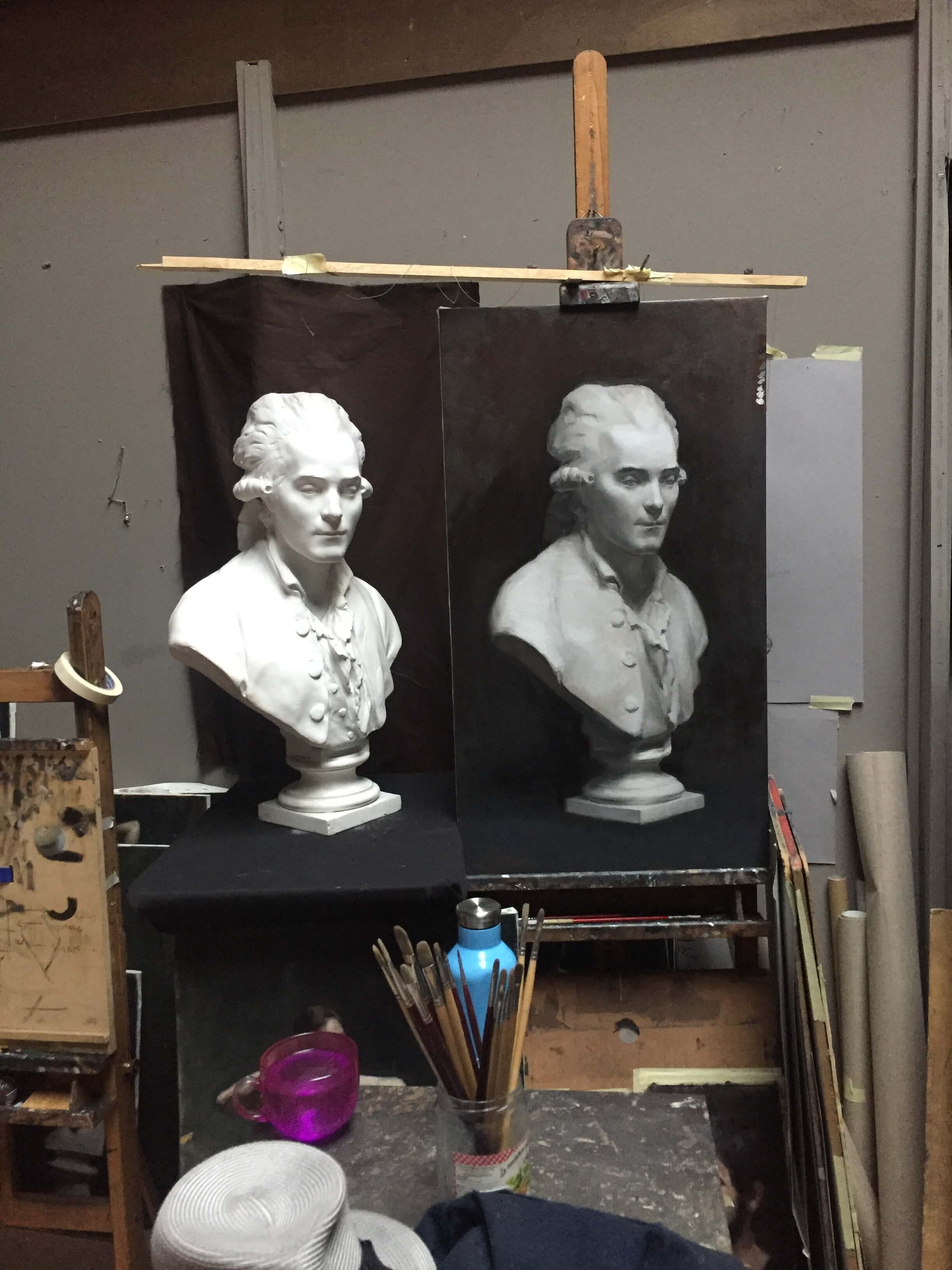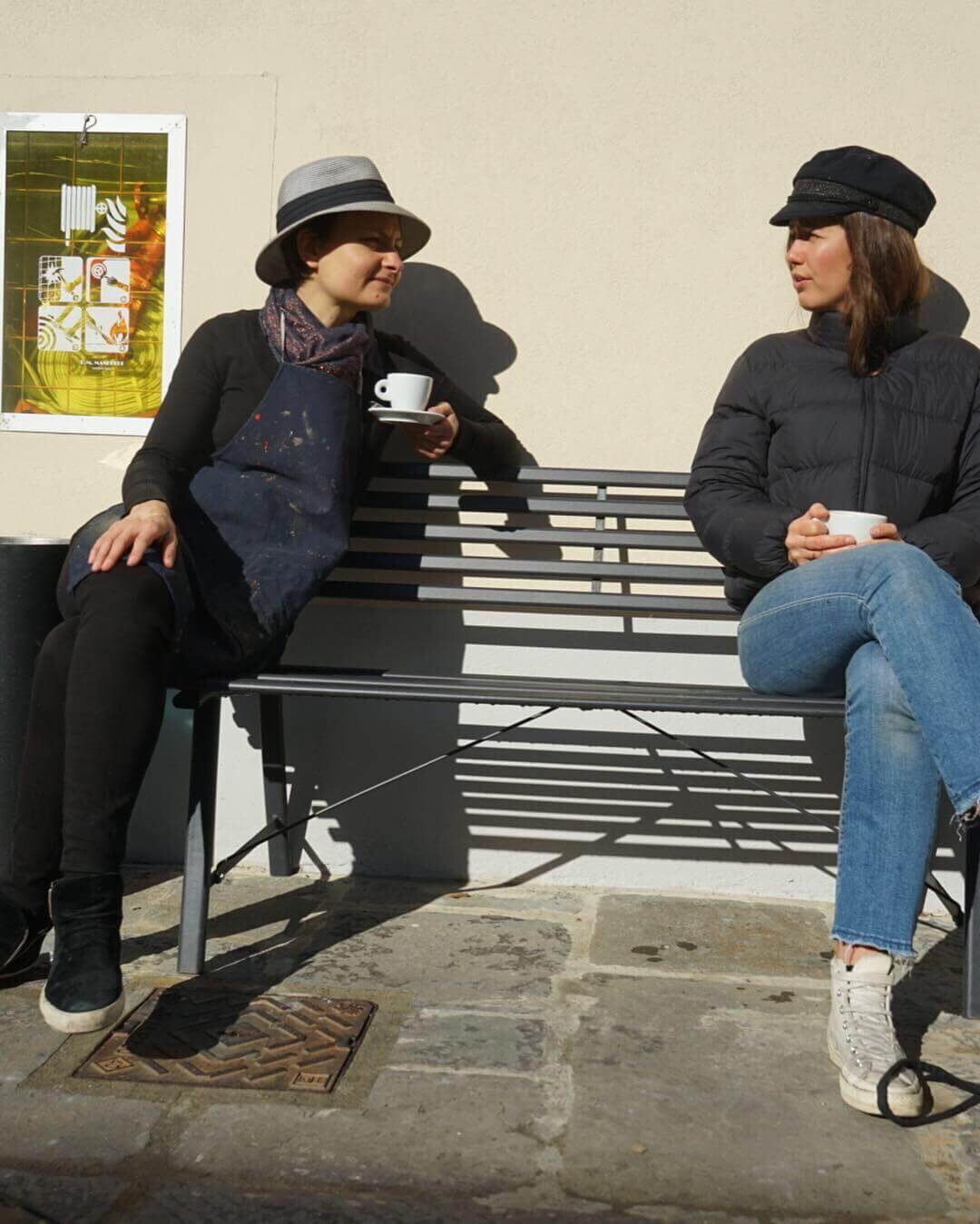My Top 10 Lessons Learned going on a Painting Safari
We had a spectacular 12 days in Botswana in October on a family safari… and I at the last minute brought my paints! I’m so glad I did, but I also learnt some lessons along the way…
October was a busy month – my sister, aunt, uncle, godmother and her best friend arrived in Cape Town from the USA for an extended visit, and the first group activity was a two-week safari to Botswana!
First day on Safari in Chobe Game Reserve
I debated (to be fair, it should never have been a debate!) whether to bring my oil paints. A couple of caring friends were absolutely adamant that I would want to paint the beauty I would encounter (I hadn’t been to Botswana before), so at the last minute I bought some small canvas boards and took a skinnied-down set of paints and brushes.
What follows are my Top 10 Lessons Learned from painting – with oils – while traveling in the Botswana bush. To give you a bit of context, we were packing up and unpacking frequently (2 nights in each place over 12 days) and we had strict weight limits and baggage size constraints!
1. Don’t think you won’t want to paint!
I found that with downtime came the immediate desire to paint, and on a safari holiday, there is usually quite a bit of downtime in the mid/late morning and afternoon, in between game drives and group activities… I would have felt quite sorry for myself (and very frustrated!) had I not had the option to paint. In the end I painted once in every stop on our itinerary.
The set-up
2. Know your preferences, but factor in the constraints of travel
I know myself… I love to paint big (or to feel like I have the room to be free when I am painting)… I also know I like a smoother surface if I’m painting on canvas. As I only committed to painting a day before we left, I was rushing when I purchased 8 small canvas boards (all were A4 size or smaller). I wished I had brought larger supports and also that I had bought a brand with a finer weave. I found I was “fighting” against the rougher weave. However, in the end my choice to bring smaller panels did make sense. 1. They are very light. And 2. I could fit them in my bag, which saved a lot of complications, considering the amount of moving around we did!
On a Makoro in the Okavango Delta
3. Bring more supports (boards/canvases) than you think you will need
I found myself rationing what I had from the very start, as I could tell pretty quickly that I’d want to paint a lot. In the end, it was just enough, but the feeling throughout the trip was to ration… I prefer and recommend a feeling of abundance while painting, so bring more supports than you think you'll use! Also, my sister joined me in my painting, which was fantastic! Bring extra supports so you can invite company! (She discovered, by the way, the pure joy of being still in nature, and how deeply fulfilling it can be, painting the beauty before you, from life.)
4. Bring small/journal-size sketchbooks
My friend Beth Lowe gave me the excellent advice to bring small sketchbooks along, and to have pencils, pens and watercolour paints with me at all times. I wish I had heeded her advice! There were many occasions when I just wanted to capture the arc of a branch, the blossoms of a flowering plant next to the river, fairy lights stretching between giant jungle trees, a warthog running to or from a watering hole… so many fleeting moments and beautiful scenes that I desperately wanted to draw or paint, but oil painting requires time to set up, and I didn’t have enough supports to feel confident in just playing around.
5. Use watercolours if you can!
If I was a watercolourist, I believe I would have been taking out my paints continually! Considering I was working in oils, I needed to have at least one hour, preferably more, for a painting session. This was quite limiting considering how much moving around we were doing, and all the group activities. Next time I plan to bring watercolours! I just need to learn how to use them first…!
6. Get your travel game down pat!
I have learnt how to set up and pack up quite quickly with my plein air experience in Cape Town. That came in very handy, as there were times when I didn’t have a lot of time, so setting up quickly and being able to pack up equally fast enabled me to grab a bit of free time to paint, and spend as much of that time painting as possible.
Additionally, knowing what to do with wet oil on canvas is essential – I use the “wine cork” method, where I slice a cork into 4-5 rings, and then cut these in half, making half-moon shapes about 1-2cm thick. I then place these in the corners of the painting, and then tape another support (preferably of the same size) to it, trying to keep the corks securely in place by making the tape quite tight over the corners. This leaves enough space between the painted surface and the second support for the oil paint to dry, but to be protected. I also then put the “wrapped” painting into a larger plastic bag to prevent any paint from getting onto my clothes, as I was packing the paintings into my travel bag.
Now that I think about it, I really recommend bringing at least 2 of every size of support you pack, so that you can do this “wine cork” method of packing your panels safely together.
Paintings all packaged up
This is what the packed paintings look like with corks in the corners.
7. Bring just what you need, but don’t leave any favourites at home
I know my plein air setup quite well by this point. Thus it was quite intuitive to go through my normal plein air painting kit and pull out what I felt was essential. Some decisions I made before leaving that really helped me:
I bought a small hand-held palette – it could fit in my bag and made my life easier.
I didn’t bring an easel – it was too complicated to manoeuvre and bulky (it wouldn’t have fit in my travel bag). I was fine to paint just holding my panels on my lap (as was my sister). That was certainly one benefit of a smaller support.
I tried to limit the number of tubes of paint I brought. The one colour I wish I had brought was cadmium orange – this colour appeared in the sunrises and sunsets, and to my surprise, mixing cad red and cad yellow didn’t give me the same power as the cad orange would have. A good trick here would be to take half to ¾ empty tubes of paint, especially for cadmiums where I don’t use a lot as the pigment is so powerful. This will help with the overall weight of your supplies.
I brought my turps/oil cups (I filled the oil cup to the brim with linseed oil, and kept the turps cup empty – see the next item below for more on this) and also my gloves and palette knife – these are essentials!
I brought a range of paint brush sizes, and I only brought brushes I know I use frequently.
8. Solvents are overrated!
My sister and I had fun on our first day in Botswana seeking out a hardware store to buy turpentine. As any painter knows, traveling with a solvent that is flammable is a) illegal and b) dangerous to everybody. So I thought we would track some down in local towns as we went. Well, we did manage to find some (a kind store employee gave us about ½ a cup of turpentine from a large bottle he had), but it was absolutely not odourless, and it gave my sister and I headaches, even though we were painting outside! It is also important to dispose of the turpentine safely, adding another complication to using this solvent.
It also shocked me to realise that even when I use odourless turpentine, I am breathing in the fumes… I’ve known this for years, but I hadn’t really appreciated just what that meant. Smelling the toxic, pungent fumes in Botswana made me a) want to stop using it immediately (and from now on I will only use Gamsol – although I have heard this too is toxic!!) and b) experiment with only using linseed oil as my medium. My sister and I both found this absolutely fine, and I felt liberated knowing I didn’t “need” turpentine in order to paint, which has always been challenging when traveling and flying.
9. Painting opens up new opportunities
My sister and I were lucky enough to be invited to paint at a nearby lodge while near the River Khwai on the outskirts of Moremi Game Reserve. Our guide Jeremy generously offered to escort us to a hide (you have to be escorted! The walk to the hide, while short, was completely exposed to the animals), that overlooked the River Khwai and the savanna. It was very tricky to see, but in the far distance, almost fully camouflaged by the shade of some trees, was a male lion, and at one point my sister and I saw the lion and a lioness move amongst the trees. What an experience, painting this scene before us! Pure magic.
10. Wild animals make great models!
I was absolutely taken by the experience of staying at the Omogolo Bush Lodges where elephants come to the watering hole throughout the day, to drink, bathe, socialise… I had a clear view of the elephants from the lodge and found myself intrigued as to whether I could paint them! It was endlessly engaging and also really fun to paint a gesture, a foot position, a trunk position… but often the elephant would move before I had painted the full pose. I didn’t mind, as I was just exploring and having fun, but happily, as the day progressed, different elephants took on similar poses to ones half-painted, so I had a chance to complete poses I had started!
So, in summation, yes definitely paint while on safari! It was a wonderful way to connect with locals and other travellers, but most importantly to connect with the beautiful natural environment. And I had the added bonus of bonding with my sister! Let me know what you think of these suggestions, and what tips you have from your own travel experiences. I’d love to hear!
Kalahari morning sunrise
For anyone who is considering a trip to Botswana, this was our route: We were in the north around Kasane (just across the border from Victoria Falls – where we spent our first night) at Chobe Nature Reserve, then we were in the River Khwai area at Moremi Game Reserve, we were in the Delta, and we were also in the Kalahara. Our last 2 nights were at my friend Caroline’s Omogolo Bush Lodges not too far from Maun – her lodge has stunning thatched roof accommodation designed around natural elephant-frequented watering holes!
The Colours on my Palette
A deep dive into all the colours on my palette - I share how to set up your palette, how to arrange your colours, what colours and brands of oil paints I use, how I make my greys, limited palettes and more.
I have become so comfortable with the colours on my palette, the way I lay my colours out, how the colours interact with each other, the brands of oil paints I use… I have experimented so much, tried so many different brands of oil paints, spent so many hours mixing colours in nature…
But it was actually a very short time ago when I was still struggling to know what colours to place on my palette, how to mix the colours I had to achieve the colours I saw before me, and in general how to move intuitively with my paints.
One of the first things we were taught at the Florence Academy of Art was to lay our paints out on our palette in the same order, and in the same position on our palette, each and every time. This is so that it becomes automatic – you don’t have to think, you just instinctively know where to go to find the colour you want.
In addition, we were taught – painstakingly – how to match a colour we saw in life, with a colour we could create on our palettes. Colour matching is now one of the most fun things for me to do, but for a long while I found this intimidating and scary!
I have been painting almost daily for 5 years now. This equates to many “hours under my belt”, many experiments, many struggles and frustrations, and also moments of success and bliss when everything feels like it’s going right.
Throughout this time, I have been learning, little by little and steadily, what works for me and what doesn’t. I have found teachers who have guided me along the way, giving me invaluable information about oil colours, oil paint brands, how to mix, mediums to mix with my paints… With all of this support, I have now become incredibly specific about what works for me and what doesn’t.
I have many tubes of paint in my cabinet in colours that seemed fantastic to try (like Indian Yellow – a transparent yellow similar to Cadmium Yellow) but in practice, I couldn’t get the hang of, or they were too overpowering (like Pthalo green).
The good news is, my practice with the same set of colours has built confidence and ease, and I don’t have to think about what to include, or how a certain colour will react to another.
I have experimented a little bit with the colours on my palette, but not too much. I have stayed aligned to the palette of my Florence Academy of Art teacher Daniela Astone, who first taught me how to paint en plein air landscapes, and to Marc Dalessio, who taught me en plein air painting briefly while I was at the Florence Academy. Daniela and Marc have painted together for years, so their instruction aligned then, and continues to support me today as I return to their paintings and videos for training and inspiration.
How Are My Colours Arranged on my Palette?
I organise my paints from right to left on my handheld New Wave palette. The order of colours stays the same every time – and the placement on my palette also, such that even if a colour is missing on a certain day (which rarely happens), that spot is left open, reserved for just that colour.
One of the early lessons at the Florence Academy of Art was to organise your palette. This consistency in paint colours and placement is essential for speed of painting.
In addition, it’s important to arrange one’s values from dark to light on your palette. I have to admit, in plein air landscape painting, when I’m mixing my colours on my palette, I don’t always arrange my values in order from light to dark. I do try and keep a range of similar colours (such as for the sky, the mountain, the sea) in similar areas on my palette, with the values for that range of colours organised in a row… But it is highly likely someone seeing my palette at the end of a session would not think there was much order in my mixing…
A (surprisingly - even to me!) good example of arranging my mixed colours by value - darker to lighter
A messier palette…
So What Are My Colours?
My colours, from right to left:
Titanium White
Cadmium Yellow Light (cooler, bluer hue)
Cadmium Yellow Medium (warmer, redder hue)
Yellow Ochre
Cadmium Orange
Cadmium Red
Transparent Red Oxide
Alizarin Crimson
King’s Blue Deep
Cerulean Blue
Cobalt Blue
Ultramarine Blue
Twelve different oil colours. When I write it down, it seems like quite a lot! But each colour is essential for me to be comfortable and confident when I’m outside tackling the myriad of exciting colours before me.
What About Grey?
Grey is an invaluable colour to “dull down” a high chroma colour, and also is essential for atmospheric effect (the impression of something receding in space – critical for a sense of depth, and the primary goal of a landscape painting).
In an effort not to waste high-quality paint, at the end of a painting session, I mix together the left-over paint on my palette to form a grey – it can be a warm grey or a cool grey – it doesn’t matter. I can always adjust it depending on what I need when I use it. But I find having a grey on my palette very useful, and I love making my own, rather than buying a pre-mixed grey. It gives my colours more vibrancy and variety, I feel.
In addition, I often “scrape clean” my palette during a painting session, mixing the colours mixed so far into a grey, or adding the mix to my existing grey. And then I wipe my palette clean with paper towel and literally, start again. This is particularly helpful when I’ve just finished painting one section of the painting – like the sky, or the sea, or the foliage – and now I’m about to move onto another section with a different range of similar colours.
Brand of Oil Paints
This is a very personal choice, and one – for me – that was influenced strongly by my training at the Florence Academy of Art. We were exposed to the highest quality oil paints (primarily from Zecchi or Rigacci art stores in Florence), and we were shown the difference between using high quality (read: high pigment) oil paints, and student grade oil paints (often “waxier”, with “fillers” that build out volume but dilute chroma, meaning you need a lot more paint to achieve a similar intensity of colour).
Some of the professional quality oil paint brands I use
I now know from experience the value in investing in a more expensive tube of oil paint, because while costly now, I know it will last for many, many years, as I won’t need very much of it to achieve the desired colour. I usually buy Michael Harding, Williamsburg, Old Holland, Utrecht, Blue Ridge or Zecchi’s. I have had a tube of Utrecht Cadmium Orange for 25 years – my grandmother gifted it to me!
The Utrecht Cadmium Orange I’ve had since my teens, gifted to me by my grandmother (also an artist)
Using Limited Palettes
My palette of 12 colours is what I’m used to and what I like, but I do have ambitions to try more limited palettes on some days. A plein air painter friend Beth Lowe says she will try experiment with something new every time she goes out to paint, including limiting her colours or trying colours she’s never experimented with before.
One day, I removed Ultramarine Blue from my palette. That was a mistake – I think some colours truly are essential! But while in Sicily, I shared my friend Denise Melvin’s paints, and had a palette of fewer blues and fewer yellows, and I found I was just as able to create the colours I wanted.
When I see a shiny new colour (there are many!) at the art shop and I buy it, often it just gathers dust in my studio cupboard. Except for King’s Blue Deep – that was an impulse buy and I have discovered I love this colour. It is perfect for the lower parts of the sky! I mentioned Indian Yellow before. While it has been lauded by other artists whose work I admire, it has frustrated me, and makes my colours feel “dirty”. As it is a transparent colour, I’ve tried it to make dark greens in shadow (it’s ideal to keep shadows thin and transparent), and it does work well for this, but having Indian Yellow on my palette is confusing as I end up using it more than I’d like…
Tip: Another lesson from Daniela Astone and many other teachers at FAA – don’t put any colour on your palette unless it belongs there, because you will end up using it!
My perseverance – and at times, stubbornness – to keep getting out there, to keep trying, day after day, even when sometimes I feel like I’m throwing down the paint and just making a mess, has all been teaching me. And now that I feel so confident and comfortable with my palette, I can focus my energy on the myriad other elements that challenge me as a painter.
Painting on the rocks of Bakoven Beach
Cleaning Paintbrushes
Here is my step-by-step method for cleaning my brushes - it keeps them clean and looking (and feeling!) like new for many months.
My paintbrushes are some of my most essential tools when painting… They are an extension of my eyes, my mind, my arm, my hand and my fingers… So choosing the right brushes, and then caring for them, is a critical part of my painting routine.
Part of the education from an institution like the Florence Academy of Art, is learning methods and routines like how to care for one’s materials. Many people have asked me how I care for my brushes, so below is a step-by-step guide showing you the method I was taught at the Florence Academy of Art. I believe it is Daniel Graves’ method (the founder of the school), still being taught to the same level of rigour and exactitude as it always has been.
Some paintbrush basics
Types of brush hairs I use: I use a combination of hog bristle and synthetic brushes.
Brands of paintbrushes I use: I mostly use Rosemary & Co. paint brushes.
Shape of brush: I use a combination of filbert style (also called cat’s tongue) and flat brushes. I rarely use round brushes, or fan brushes, but I know they offer some good options for a variety of brush strokes.
Different styles of paintbrush head (https://en.wikipedia.org/wiki/Paintbrush)
After a day of painting, my brushes are full of oil paint. I wash my brushes almost every night. When I can’t, I put them in the freezer with the paint from the day still on them. See below for more tips if you can’t wash your brushes every night.
Tip: Don’t use turpentine to clean your brushes – this damages the brush hairs. I use turpentine as a thinner when I want a more transparent, faster-drying layer of oil paint, but I avoid using turpentine otherwise.
Alternatives to daily washing of brushes
If you don’t want to wash your brushes every night, or you can’t for some reason, here are some alternative approaches:
Keep your brushes in an “oil bath” of linseed oil – there are “oil bath” holders you can buy where the brushes are propped up in a coil above a tin with a layer of linseed oil in the bottom, so that there is no weight on the brush hairs. You can clean the brushes in the oil first before putting them in the coil, and the oil paint sediment will settle on the bottom of the tin. The hairs of the brushes should be submerged in the oil.
Clean your brushes in a jar of linseed oil, and then wrap them in a plastic bag until you’re ready to use your brushes again – the plastic bag prevents oxygen from getting to your brushes and drying them out.
Put your brushes – as they are, with paint on them – in an airtight bag or container in the freezer. The freezer prevents the oil paint from drying out, and your brushes are ready to be re-used the next time you paint.
Note: This method doesn’t work very well if your brushes are very dirty by the end of a painting session, and all the same muddy colour - only use this method if you are able to keep your brushes reserved for specific colours and values.
In all these methods, I’d recommend washing your brushes about once a week with soap and water, or with vegetable oil, and then soap and water.
Cleaning Your Brushes - What You’ll Need
Your dirty brushes :)
Vegetable oil (I use sunflower oil, but canola oil works too)
Two sealable, airtight jars (I use plastic or glass)
Hand / clothes soap / detergent
Paper towel
Access to a sink with running warm or cool water - preferably don’t use a sink where you prepare food
Step 1: Remove excess paint from your brushes with a paper towel
I squeeze off excess paint from my brushes using a paper towel. This helps speed the later steps in the process.
Step 2: Clean your brushes first in vegetable oil
I like this step as it removes a lot of the paint from my brushes, and makes the “soap and water” step much faster. You can use linseed oil too, but vegetable oil is cheaper and just as effective. It does mean, however, that you have to wash the brushes with soap and water after using the vegetable oil, as these oils will interfere with linseed-based oil paints.
I use canola oil or sunflower oil, readily available in supermarkets.
I use two airtight, sealable containers for my vegetable oil: one for my used oil, where the sediment can gather between brush cleans, and one that I keep empty, and fill with the used, clean oil that has separated from the sediment in my container of used oil.
When I’m ready to clean my brushes, I pour the separated vegetable oil from the jar of used vegetable oil. I clean my brushes, gently stirring the dirty brush around the bottom of the jar, removing as much of the paint as possible. I then wipe off the excess oil from the brush on a piece of paper towel, set aside, and begin on the next brush.
When I’ve washed all my brushes in this way, the jar with “new” oil is now very opaque and dirty. I pour this oil into the jar with “old” oil, and by the next evening, the sediment has mostly sunk to the bottom, and I can reuse the oil for the next evening’s brush cleaning.
Step 3: Wash your brushes with soap and warm or cool water (not hot)
For soap, I use a regular dish soap bar (called Sunlight Soap in South Africa). When in Florence, I used an olive oil soap bar. At school, many students also used liquid clothes detergent. I use a thick bar of soap. I can brush the soap with my brush and create a lather, which I find helpful when cleaning my brushes.
After thoroughly soaping my brushes, I rinse with warm or cool water.
Tip: Don’t use hot water when rinsing your brushes. This can cause the glue that binds the bristles to the metal at the base of the paintbrush to loosen, ultimately causing your bristles to fall out.
Step 4: Dry your brushes with paper towel
I squeeze the ends of my brushes with paper towel to remove all excess water. I leave the wet paper towel to dry overnight, and re-use the paper towel for cleaning my brushes/for painting the next day.
Step 5: Wrap the tips of your brushes with paper towel after shaping the brush with water or saliva
This is a technique that may be unique to those of us who studied at the Florence Academy of Art… It is Daniel Graves’ method for keeping your brush hairs conditioned and to maintain the shape. It may not be necessary to use saliva with synthetic brushes, as the hairs don’t need to be conditioned, but I do it anyway.
So what I do is spit into the palm of my left hand, twist both sides of the brush into the saliva, and then tear off a small piece of paper towel and fold the paper towel around the hairs in the shape of the brush.
It is like folding a parcel or present around the top of your brush.
Step 6: Lay your brushes flat to dry over night
According to my teacher Marc Dalessio, leaving your brushes vertical with the brushes at the top, can result in water trickling down from the brush head to the heel of the brush, causing swelling and loosening the connection of bristles to the ferrule (metal) part of the brush, that holds the brush hairs together.
Paintbrush parts (http://teresabernardart.com/anatomy-of-the-artist-paintbrush/)
I put my brushes in my brush holder, but lay this flat on my plein air kit, so that the water dries horizontally, and so that I don’t forget my brushes when I rush out the door the next morning for my painting session :)
Finding Inspiration Above the Clouds
You never know when inspiration will strike… and on this day, it was high above the clouds on our way to America…
We are flying high above South Africa, on our first international trip since Covid began. My mom and I are on our way to America to visit family. We look out the window, not long after ascending from Cape Town International Airport, and I am seized by inspiration, seeing the striking purple shadows on the mountain range just outside of Cape Town.
The shadows are so intense, the mountains so majestic and vast, the landscape so grand… I feel completely inspired. All I want to do is paint what I see, travel to what I’m looking down upon, explore and capture and create…
And then I think, what is this feeling? What is this (almost) compulsion, to want to capture what I’m so immediately and powerfully inspired by?
When I lived in Florence while studying at the Florence Academy of Art (which strangely feels like a very long time ago, but was just 2 years!), I used to host Salons in my beautiful, spacious apartment. I felt so uniquely suited to host these Salons – my apartment had a large open lounge with day beds, a double sofa and plenty of chairs. I loved inviting my fellow classmates to my home on the weekends to talk art. I intentionally wanted to create my own version of Gertrude Stein’s salons on Rue de Fleur in Paris that she hosted over 100 years ago.
Sitting in a circle in my lounge, exploring Inspiration from all it’s angles…
The theme of one of our Salons was Inspiration. It was the first Salon after our summer break. My parents were visiting me, so they were also in attendance, along with about 20 of my classmates, teachers and friends from outside the school. Leading up to the Salon, I was fretting – I didn’t have a theme! The usual rhythm we’d created over the year or so the Salons had been in existence, was for my friend Alice and I to come up with a theme early in the week, send it out to the Salon What’s App group with some thought-provoking questions, and then host the Salon on the Saturday evening.
This week for some reason it was up to me to come up with the theme, and I was stumped. I was saying I had no inspiration for the theme. Then a friend Stefan said, why not make that the theme! Inspiration! And I knew it was just right.
During that Salon we talked about what inspires us, and what inspiration is, and the purpose it serves. Looking back on my mind maps from that Salon (I always made mind maps to capture the inspirational (!) things people were saying and sharing), one comment stands out –
“Inspiration is the product of harnessing a feeling”
Two of our mind maps from the Inspiration Salon in my apartment in Florence, October 2018.
I feel something deep inside when I look at a stunning (to me) landscape, and I then feel inspired to respond in some way… by creating. By attempting to capture the beauty that moved me so…
We explored why one thing, or one scene, or one artwork, inspires us, but not another. When I walk around a gallery, some paintings will just reach out to me, grabbing me, calling me… but not others. Why? And for sure it is different for everyone! Is it based on our upbringing, our life experiences, our tastes, our passions and interests, our personality, our psychology…? Yes yes all of these, and more…
Which is what makes inspiration so fascinating to me. It is so personal! And yet, universal.
An early morning painting I did of the rocks and sea at Kommetjie, Cape Town, South Africa. 2021.
When I create a painting, I am hoping it will speak to someone else, to move them the way I was moved. And that can only happen if we have some things we share. Although at the same time, the hope is that my art can connect in ways that supersede the more tangible, definable aspects of what makes us who we are to the world. Finding those commonalities that run deeper, where our essence as human beings overrides the labels and experiences we define ourselves by.
Inspiration is also connected to motivation… I can say 100% it is my inspiration that motivates me to paint. When I walk onto a beach, the scene before me may or may not move me. When it does, I am immediately singularly focused, working like mad to get the scene down in paint before it changes too much and the moment that grabbed me becomes so far gone I can’t remember how to represent it anymore.
But then there’s the flipside… What if I’m not surrounded by something I find inspiring? Does that mean I don’t go outside? Resistance was something we talked about at the Salon, and my friend, teacher and the great artist Ben Fenske spoke at length about Steven Pressfield’s book The War of Art. The powerful message from Steven Pressfield is to show up each and every day, and open yourself up to the inspiration, but know that it may not come, and don’t expect it to come. But be open. Be a receptacle. And it will come… eventually. Our job is to make ourselves available… By doing the hard work of showing up every day and facing our resistance head on.
I listened to the audio book immediately after the Salon, and I also listed to a couple of Steven Pressfield’s interviews on radio online. It has now been almost 3 years since that Salon, and I think in general I have been living his advice. I set out in the morning not knowing what I will find… not knowing if I’ll be inspired… but committing to the process. The process of being open, of seeking, of exploring my beautiful natural environment, and most of the time, I find my inspiration.
Not mine… the inspiration. Inspiration, that mythical, magical thing that makes us uniquely human, and that brings – I believe – the power of art.
I am so grateful when inspiration strikes, and I am so grateful it drives me, motivates me and challenges me to keep on challenging myself, so that I can capture the beauty that inspires me to the best of my ability, to hope to do this natural environment of ours a little bit of justice for the awe-inspiring beauty that she is.
As I finish this blog post, I’m seeing the sky darken as the sun goes behind the clouds as I nears the horizon. There are low-lying fluffy clouds casting shadows onto the ocean way below. Tones of muted greys and silver blues. Like a Rothko painting… and I’m inspired all over again…
Chasing Clouds
I am obsessed. When the clouds start rolling in, when they turn pink as the sun starts to set, as they flow into and over crevices in the rocks… I am mesmerised. And I feel an urgent need to paint them… knowing full well the clouds are moving so fast, the moment I just observed (and fell in love with) will never be repeated… ever…
I am obsessed. When the clouds start rolling in, when they turn pink as the sun starts to set, as they flow into and over crevices in the rocks… I am mesmerised. And I feel an urgent need to paint them… knowing full well the clouds are moving so fast, the moment I just observed (and fell in love with) will never be repeated… ever…
Last night, driving home during the “golden hour”, I couldn’t bring myself to actually drive home, and miss the stunning light and clouds spilling over the top of Table Mountain, Lion’s Head, Devil’s Peak and the Twelve Apostles. I feel like Cape Town is a stage, with the most beautiful and majestic scenery created for a movie. But it’s real! Even after growing up here, I cannot get enough of the beauty, or even process it.
It causes me pain, somehow, to see such beauty. I am unclear as to why. Why should seeing something beautiful cause me pain? The beauty creates a desperate need in me to capture it, to stop time, to halt movement. Is it a recognition that this is impossible? That everything is fleeting? Definitely, painting is a way for me to try stop time… The moment (moments) I have captured in paint will forever be preserved. A friend said my love of and passion for my natural surroundings represents my spirituality. Beauty connects me to my spirituality.
The urgency with which I needed to keep driving last night, to keep finding a new vista, a new turn in the road that revealed another stunning view, that I tried to capture desperately with my phone (sticking my arm out the window) was intense. I literally could not fill my cup with enough beauty, while at the same time I felt completely overwhelmed and somehow sad. Sad that this moment will pass, has passed. Knowing that it can never be repeated. I think mindfulness needs to come into play here… to just be present to the beauty, and to accept impermanence. Nothing will last forever, and everything is forever changing.
The urgency to be part of and capture the beauty that surrounds me propels me out of my apartment in the morning, and stops me staying indoors on beautiful days (or even not-so-beautiful days – as long as it’s not too windy or raining!). And for that I am grateful.
I have been chasing clouds, chasing shadows on mountains, chasing foam on the ocean, racing to paint before the mist clears or the clouds are burned away by the sun, or the shadows move too much as the sun reaches the midday sky. In the moment, I couldn’t be happier or more present. Afterwards I invariably feel like somehow I didn’t manage to capture the beauty before me satisfactorily. But some hours or days later, I often surprise myself, and look at the scene I captured again, and recognise a feeling, a specific moment, the celebration of what it felt like to be living that moment in nature, connecting with nature. And I feel a calm. My cup feels full. Perhaps this is when I find my mindfulness. Perhaps this is why I chase clouds.
Serendipity, Synchronicity and Chance Encounters
People talk about serendipity. Synchronicity. Chance encounters that can change everything.
Well, I had mine. It was in London, while I was living in Battersea, South West London and working for American Express.
Battersea Arts Centre, London, UK. Where it all began…
Photo credit: https://archello.com/project/battersea-arts-centre
People talk about serendipity. Synchronicity. Chance encounters that can change everything.
Well, I had mine. It was in London, while I was living in Battersea, South West London, and working for American Express. I knew I enjoyed painting, and wanted to spend more of my time painting. I kept finding myself saying I wanted to be creative and expand my life outside of my work life.
But I couldn’t find an art school that made logistical sense. South West London is not an easy commute to North East London, which was where all the art schools I could find online seemed to be. And I didn’t even really know what kind of art school I was looking for! I just knew I wanted to paint. So I muddled around on the internet for a few months but didn’t make any progress.
Then one cold, grey Saturday morning in January, just after New Years when resolutions are fresh, I found an online special at the local Battersea Arts Centre for five Yogalates exercise classes. What is Yogalates you may ask (as I asked myself)? A mix of Yoga and Pilates. I love yoga. I love Pilates. I have now discovered I don’t love them together.
But that definitely not the biggest discovery I made that Saturday morning.
My serendipitous moment came at the end of the class, when a couple from the class literally bumped into me as we were pulling our coats off the rack. We began talking, and when I asked them what they did, it turned out they were both artists! She was studying at a school just down the road (down the road!) and he was renting studio space in the same building to create his art. I couldn’t believe it. I had been searching for a school for ages, and now they were both spending each day in an artistic space a few hundred metres from my front door (I just googled it – a 6-minute walk!).
And then they invited me to come with them to the studios! We walked a few minutes down the road, and they showed me the space. A warehouse converted into many little artist studios with an art school on the top floor. Divine! Right on my doorstep! We sat in the guy’s studio for four hours drinking cup upon cup of not-quite-hot tea using recycled tea bags and talking about art, life, and who knows what else. All I know is, it was glorious. I felt connected, excited, authentic.
I wanted to be friends with these two people forever! But strangely, after that chance encounter, that moment of synchronicity or serendipity, I never heard from them again! At times I wondered whether they really did exist, but they did – it was through the woman that I emailed the Lavender Hill Studios (the name of the art school she was attending) and secured a place in their Monday evening drawing and painting class. And it was through this class that I, unbeknownst to me at the time, began building a portfolio of artworks I would use for my application to The Florence Academy of Art three years later when I was living in Singapore and looking for a “way out” of my corporate experience.
There was another element at work here. The way I first discovered one could go to Italy and study art was through a close friend’s older sister. She studied painting in Florence in 2003. Ever since then I’d had this idea firmly planted in the back of my mind… one could go to Italy to study art. Even though I didn't know it at the time, the London art school’s method was strongly rooted in the Florence figurative tradition, as the directors of the school had studied and worked in Florence for many years before opening their own school in London. So I was actually beginning a Florentine artistic training in London, and the work I created gave me the portfolio I needed to apply to The Florence Academy of Art.
Imagine if I’d known all of this would play out, after a serendipitous, synchronous moment bumping into two strangers in a yogalates exercise class in Battersea. It might have been hard to believe. Or maybe it would have made perfect sense.
“Serendipity: good luck in finding valuable things unintentionally”
“Synchronicity: when things happen together, as if perfectly timed, coined in the 1950s by the Swiss psychologist Carl Jung, to describe uncanny coincidences that seem to be meaningful. The Greek roots are syn-, “together,” and khronos, “time.””
What Kind of Artist Do I Want to Be?
I had a powerful conversation with my close friend Denise tonight. Denise completed the three-year FAA program (graduating last June) and was my first friend at FAA. I asked Denise for advice about how to approach the third (and final) year of the painting program. I begin the third year in a week. I have been feeling a lot of fear, trepidation and anxiety (yes, anxiety! Even though I’m no longer in a corporate job!!) about the start of this new school year.
I had a powerful conversation with my close friend Denise tonight. Denise completed the three-year FAA program (she graduated last June) and was my first friend at FAA. I asked Denise for advice about how to approach the third (and final) year of the painting program. I begin the third year in a week. I have been feeling a lot of fear, trepidation and anxiety (yes, anxiety! Even though I’m no longer in a corporate job!!) about the start of this new school year. I was with my second-year teachers for four trimesters (I only completed two trimesters with the first year teachers), and somehow the expectations for Third Year seem higher. Everyone looks like they work so much harder than in the first and second years, have even less time than before, and invest many extra hours on the weekends to complete projects (still lifes, self portraits) in shorter and shorter periods of time.
I just haven’t felt ready. I don’t even know how to prepare, to make myself feel ready!
Denise gave me excellent advice (I hope!). She said, think about the type of artist you want to be. Let the third year be the time when I get to practice the types of paintings I want to create – the style of brushstroke, the subject matter, define and refine my aesthetic. It’s a safe space to try things out and have guidance along the way. Don’t let the teachers decide for me. Know what I want to get out of this. (Funnily enough, that’s exactly what I was talking to my sister about on her recent visit to me in Florence. As professionals, we also need to be clear about our own personal goals for growth and development. Without these personal goals, who knows what direction a company or a role may take us. With a little bit of thinking, defining and planning, a company and a role can give us exactly what we want. But we will only know it’s what we want, if we have defined the “want” in the first place!)
OK. Great! But there is only one hitch. What kind of an artist DO I want to be? I don’t know yet! I am still struggling to feel comfortable with the word “artist” being applied to me! This has been part of my trepidation over the last few weeks. Am I an artist? What do I want from this intensive training? Where is it leading me?
I found the final trimester of second year more challenging than any trimester previously and I have started to lose faith in the path I set myself on, when I left my corporate job two years ago. My acupuncturist asked me whether I am losing faith because I am finding it hard, I am not enjoying the experience, or because I don’t know where the training is leading me. I said, all three! She said, one will be stronger than the others… So I thought again and decided it’s because I have found it so difficult. I have not felt able to accurately depict something from life. This has prevented me from enjoying myself and stopped me seeing where this might lead me. Why has it been so hard? Not seeing a way around issues in my painting, making the same mistakes over and over again (insanity, I hear you say…), not feeling confident in my drawing and hence spinning (as nothing in the painting I felt I could depend on, trust)… I realise I’m talking specifically here about the painting of my cast – Robespierre. I think, in short, he beat me! Well, more accurately, the drawing of the cast beat me, as I never figured it out, and at no point did the drawing (the paintbrush strokes I was doing in paint) accurately reflect the real cast.
So where does this leave me? Well, with some work to do. Denise motivated me. She has helped me see again why I began this training in the first place. I love to paint. I have ALWAYS loved to paint. There is so much beauty in the world I want to connect with, represent, share with others. But it’s not easy. This course is teaching me just how complex drawing and painting (and sculpture!) are. I need to take charge of my training (another clear link to my – any! – corporate experience!). Find artists I want to paint like. Styles I want to emulate. Discover, form, and define, my aesthetic. Find still lifes I admire, and then reconstruct them in the studio.
The most important question is asking to be answered.
Critiques: The Good, the Bad and the (Ultimately) Good
It’s been a tough few weeks. I have received hard critiques. Critiques that made me feel like I wasn’t good enough to be at this school, not good enough to be an artist, that I’d never be able to do “it”.
Some of my studies and drawings, as well as one of my half-life-size sculptures, from the sixth trimester (2nd Year).
I
t’s been a tough few weeks. I have received hard critiques. Critiques that made me feel like I wasn’t good enough to be at this school, not good enough to be an artist, that I’d never be able to do “it”. By “it”, I mean painting the way my teachers want me to, painting like a professional artist, understanding the concepts, being able to apply the concepts (like understanding that when a skin tone is more yellow, the transition colour into the shadow “can’t” be blue, because the yellow skin will react with the “blue” colour I see to make it green), and making an exactly accurate replica of what I see, especially in my cast (I’m copying a bust of Robespierre, of the French Revolution and the guillotine – picture from this week attached).
I felt angry. I felt criticized. I felt frustrated. Really frustrated. I felt hopeless, like giving up.
And confused. The critiques were seemingly going straight for my personality. And I didn’t believe these things were part of my personality. Were they? Are they? For example, I am seemingly very impatient. I even asked my dad, via What’s App. “Dad, am I an impatient person?” Dad: “Yes. Meditate!” This was news to me! But the critiques have been consistently addressing this.
People have said in the past, that when you are studying art, you will be facing yourself. And some teachers at the school have also told me that when they critique a student’s work, they aren’t really (or aren’t just) critiquing the work. They are seeing and critiquing where that student is, psychologically and emotionally, at that moment. The artwork reveals all. I didn’t appreciate this, or hadn’t experienced this, until the past few weeks, when I felt like I was coming up against myself – my “bad” habits – every day. Like being on a loop, or a boomerang (to use the Instagram language for a short video that repeats around and around in a loop), where I keep repeating the same behaviours and don’t seem to be able to stop them.
I saw a video blog by a woman called Sophia, the Wise One, a healer in New Jersey who a friend introduced me to. She said being able to see a behaviour you want to change before you enact it, is the first step. But then there is this sometimes long in-between period where you see the behaviour before you enact it but can’t stop yourself doing it. This is an uncomfortable time! It’s only after a period of living in this in-between that you’re able to stop the behaviour before you do it… I can see I am in the in-between stage.
I can see myself being impatient – acting without thinking. Not having a plan for what I’m going to do. Not setting myself up for success, by being too impatient to get to the outcome. Possibly it’s anxiety I won’t be able to get to a desirable outcome. I won’t know how. So, I act, to stop this uncomfortable feeling. But in doing so, I miss the joy of the experience, the journey.
My sculpting teacher Mitch said it so eloquently, when he saw me “slapping on” clay to sculpt an arm on a half life-size figure we are working on. He said, be in love with every stage. It’s about the journey, not the destination (exactly, ironically, what I took away from my Camino experience!). Don’t fight a battle on my sculpture (or canvas) – the marks will show this, and it does not make for a good work! My current cast is a battleground. A war is being fought, and it is now in the 7th week. The 7-week war!
What could I have done differently? Taken a breath. Thought about what I’m trying to do. Created proper planning sketches and value studies in paint. And actually try to match the colours I see! (On a white cast, where you are painting colours that are anything but white, this is a challenge, let me tell you!)
My teachers didn’t hold me back, stop me, tell me not to begin the painting until I’d done these preparatory steps. At this stage, I should know the process, and know what I need to do to make myself successful. More importantly, I need to make my own mistakes. There are no shortcuts. There is no quick way to the finish line. As Mitch also said, I’m going from A to B. I can go slowly, planfully, with care. Or I can spin around and around and around, running as fast as I can. But that’s not going to get me to B any faster. In fact, it’ll take me much longer! (And I’ll be exhausted from all the running!)
So… even though I have found the critiques painful, hard and confronting, I am realising that indeed, this is a part of my personality that I must face. And it shows up in all parts of my life. I spoke to my past leader from American Express Kerrie yesterday, and I recalled a time she gave me feedback on this exact thing – I was too abrupt with a colleague because I was trying to get to a solution quickly, without allowing for the needed steps to get there. I wanted to jump to the end. This wasn’t a good way to engage with my colleague, and it’s not a good way to engage with an artwork.
Kerrie also made the valuable connection between critiques in the art world, and feedback in the workplace. In the art world, we are being taught by teachers we respect, admire and trust. And they tell us – directly, sometimes harshly – what we need to do to get better. To be the best we can be. It is coming from a place of love. In the workplace, too often a leader feels uncomfortable, unable to give the specific, direct feedback that an employee needs.
In the end, after three weeks of having to face myself every day, in a challenging way, I feel like I’ve surmounted something. I have faced myself, and I see myself. And I realise this is behaviour I can change. I just need to be conscious. Like breathing in yoga. I need to breathe. “If one is not breathing in yoga, we have to ask ourselves,” as my favourite yoga teacher Cat Meffan says in her videos, “if we’re really doing yoga.”
Am I really creating art if I’m throwing down paint, slapping down clay, not really looking or seeing or thinking?
The challenge now is to see my behaviour, face it, embrace it, and change. I didn’t expect my critiques at art school to be so direct, so arresting, or so valuable.
What Learning Feels Like
This was a tough week for me. Week 5 of an 11 week trimester. Half way through the trimester, half way through the academic year. I think a lot of us students had big weeks – and by big I mean big breakthroughs, big jumps in our understanding, big jumps in our ability to represent that understanding visually!
My big learnings began with the head instructor for the second year Painting program, Daniela Astone, giving me a very strong critique.
This was a challenging week for me. Week five of an 11-week trimester. Halfway through the trimester, halfway through the academic year. I think a lot of us students had big weeks – and by big I mean big breakthroughs, big jumps in our understanding, big jumps in our ability to represent that understanding visually!
My big learnings began with the head instructor for the second year Painting program, Daniela Astone, giving me a very strong critique. (Daniela is exactly my age. When I first met Daniela, it was like a Sliding Doors moment – what if I’d gone straight to art school out of high school? Would I also have become a professional painter, art teacher, had a long-term partner and a 10-year-old daughter by now? My mind did wander…)
Each day, twice a day (morning and afternoon, not counting evening classes!), one or two teachers give a critique to help you understand your work better, and to help you progress. Critiques are the most valuable aspect to our education, because in this daily activity, slowly slowly (piano piano, in Italian), over time, this is how our eyes are trained to “see” better.
Interestingly, on Monday, Daniela essentially told me to stop waiting for the teachers to tell me what to do. Have my own plan, build my own strategy, design my own approach to achieve my goals. She said I need to take responsibility for my decisions and go with them. She also put a bit of fire under me, saying that if my current cast was too difficult (at this moment in time), I should set it aside, and begin another project so that I can build the skills I need on a more manageable cast. Tantamount to admitting defeat! Failure! This was more than I could take…
So, I went home on Monday night and tried to draw my cast from memory. Stuck. Instantly. Where was the middle of the cast? How high was it to its width? How high up was the chin vs. the chest? Suddenly I realised, I did not KNOW my cast, even though I had been studying him for 4 weeks! (And by him, I mean, a bust of Robespierre, the French revolutionary politician from the late 1800s who was pivotal in the French Revolution and loved the guillotine.)
Now I had my (self-assigned) marching orders. Learn my cast, deeply understand my cast. Which is what I did on Tuesday, and it felt like relief. Finally, I was finding a way to make a very curvy, amorphous 3D cast make sense on 2D canvas. That felt good. No, it felt great.
Daniela teaches us on Thursdays too. I was a little afraid to see her on Thursday, if truth be told. What did she think about me after Monday’s “talking to”? And what would she say about my progress? Well, not very much! She said, “I can see you have found a process that’s working for you. I’m just going to let you work. Oh, and use more colour in your greys!”
Which is where the second big learning came this week. How to paint greys, that are not grey! We are all learning the basics of drawing and values (light and dark) before anything else. If those two elements are correct, colour, paint application and technique can follow. But without those two, you’re going nowhere. So, we start in pencil and charcoal. And then a grisaille palette (white, raw umber, black), and then limited palette (white, black, English red, ochre). And then, in a future painting (I’m not there yet!), a full palette.
But until then, we paint white casts. But white is never white. Actually, white is made up of all the colours of the rainbow. So… where does that leave me with my cast? I certainly shouldn’t only be painting my white cast in white and black… but this is what I was doing.
Until Richard, our teacher today, came in for my critique. And he said, “Why is your cast so cool? Where are the warms? Look at the shadow under the chin on the cast. And then compare it to your painting of that shadow.”
And suddenly I saw. Like someone had turned on a light, suddenly someone had turned a black and white TV into colour. It was that instantaneous. That immediate. That surreal. I blinked, and couldn’t stop seeing how much darker and colder my painted shadow was! This kind of awakening I don’t think gets reversed. So now I can see! But, can I paint what I see? That’s next week’s challenge…
So what does learning feel like? It feels intense! It feels hard. It feels overwhelming. And it feels exhilarating, exciting, and rewarding. I was in bed by 9pm Wednesday night and 10pm Thursday night – exhausted from all the mental activity. But leaving school on Friday evening, chatting to Heidi, a fellow 2nd year student, I reflected on how good it felt to have my work admired by a first year who came into my studio this evening. The first year said, “How did you get your lines to have such beautiful variety? Soft, hard, strong, light. This is a goal for me,” she said, “to get my lines to look like yours.” Wow, I thought. I’m struggling with understanding a complex cast, and how to paint grey so it’s not grey, and I have almost missed how far I’ve come. Within a day I’d pulled together a complex drawing of a seated long pose, with beautiful varied lines to emulate!
Footnote: funnily enough, the day I met Daniela for the first time, the first thing she said to me when I shared my life leading up to arriving in Florence, was, I wish I’d had your life! She wished she’d travelled the world, worked in different countries, experienced another type of life… Sliding Doors indeed!
A Weekend of Conversations with Artists
When I think about my time in Florence, I can imagine remembering swathes of time spent talking. Sharing. Connecting. Speaking about the deep things. There are so many opportunities for these conversations to happen.
I don’t even know how to begin capturing the themes! I find myself desperately trying to take notes – on my iPhone, in notebooks, mentally (although keeping mental notes feels so futile as trying to grasp so many new ideas, books, concepts, names, means as soon as I try commit one to memory, another one butts in and pushes the last thought out of the way!).
Talking with fellow second year Florence Academy of Art painting student Livvy Wells during a morning coffee break
“For as the wood is the material of the carpenter, and marble that of the sculptor, so the subject matter of the art of life is the life of the self.”
This Sunday night, my head is spinning from all the richness and depth of conversations I have had over the last 48 hours. From Friday evening to tonight, topics have ranged from consciousness, the role of artists in society, personality traits, artificial intelligence, connection and community, how to design the perfect still life all the way permacultures in Canada….
Friday night began with dinner at Tina and Marc Dalessio’s villa in the hills outside of Florence. Marc is a highly successful predominantly landscape artist, and Tina has recently graduated from the Florence Academy of Art, leaving her career as a published PhD Human Rights Lawyer and academic to become a professional artist. Their home is in a palazzo from the 1600s, with a view over the Arno river and the Duomo, with frescoes adorning their walls. Their apartment is in the previous ballroom of the palace, and the frescoes depict majestic trees, rolling hills, and a replica of the palazzo itself.
There were 4 of us for joining for dinner - Alice, Sparsh and myself, all at FAA currently, and Julz, Alice’s fiancé visiting from London.
We talked about consciousness, connecting to portals in other universes, quantum physics being the magic of science, post-modernism, modernism, and the rebirth of realistic art. So often the conversation turns to the value of realistic art vs. the more abstract, conceptual. I observed that ALL art is perception. And Marc said, “So much of art is perception. I mean, it’s just oil and mud, at the end of the day….” The importance of tuning into subtlety, intuition, emotion. We talked about the role of an artist and the special duty that we have as artists – we are creating images. This is acting as an influencer.
We talked about Tesla, and how he believed he wasn’t a “brilliant man” nor the most brilliant man alive. He was a vehicle. A conduit. For the spirits. For ideas that were greater than he was. We shared book recommendations – Frances Yates’ book “Giordano Bruno and the Hermetic Tradition”. A book that explains how ancient traditions were not at odds with the Church of the renaissance time, and artists painting in that time were not representing god and Jesus in the same way we think now – the principles were broader, more humanist.
Saturday night was Daniel Graves’ first ever exhibition of his classical realist artwork in Florence after creating art here for 40 years. His school (and my school!) The Florence Academy of Art, has been functioning in Florence since 1996 – 27 years.
After the opening, a group of us found aperitivo at Soul Kitchen (good, healthy, more of a buffet than a few peanuts and chips) and then helped warm Hannah’s new studio apartment in a back alley in Santa Croce. We had a new friend join the group – James, who is studying drawing for 6 months at the Russian Academy. James shared the concept of “the Big Five Personality Traits” when discussing what we artists are like. James said many artists are high on the “sensitive/nervous” spectrum of “neuroticism” (vs. secure/confident). A theme from this week has certainly been how many introverts we have at school and in the artistic community, vs. extroverts.
Sunday afternoon I posed for my friend Jess to paint my portrait. Jess has set up a weekly Sunday session of P’s… Portraits, Prosecco, Painting, and I think there was a 4th P… This Sunday it was only me. And I am grateful for the depth of conversation this allowed us. I was writing notes furiously!
We talked about connecting to our ancestors (I had a brainwave idea for my first still life – I have been quietly stressing about what I will assemble for my still life, and last night a comment from Duhita helped me start to think about one particular object that I feel a strong connection to, and to build the rest of the still life around that; my brainwave was to paint my great grandfather’s wooden art case). What does it mean to be connected to our ancestors? Am I connected to mine? Family constellations and being connected by strings…
We talked about ways to live an artistic life – the idea of a digital nomad, new to me, in an artistic sense. Yes, traveling and blogging, but painting in various locations around the world, and then selling those works from that particular place. But then expanding on that, I thought about finding local artists, and showcasing their works, their stories, on a blog or podcast. And then beyond that, finding FAA alumni and following their work, progress, careers, and visiting them and collaborating with them. And then the idea of organising month long on-location painting residencies with other painters from the school, possibly in the home towns of the alumni (hello south India!).
We talked about the concept of re-defining the values in society, vs. re-distributing the wealth. If society valued what artists do more, the money would therefore flow to them, and there would be no need for actual shifting of money.
Jess asked whether I saw myself painting en plain air. I said, 200% yes! I love being outside. In nature. I spoke about my summer traveling in Italy last year, painting everywhere I traveled, and how powerful, nourishing, grounding, enjoyable, and spiritual that was for me. Our conversation also made me ask myself what stories do I want to tell when I’m creating my art? Does one need a literal story or specific message, or can it be about capturing the essence of a person, a place? Capturing the spirit of the outdoors?
This then brought us to the role of the spirit in our existence and our chakras. We talked about the book “Eastern Mind, Western Body” by Anodea Judith, that shows how the chakras system of the “East” are relevant to Western society today, through links to psychology and, science and spirituality.
Sunday evening the conversation flowed over dinner at Lonnie and Stefan’s. The group tonight included Per again, and also Hannah and Kaelin. We talked about consciousness. Tom Campbell. I’d write more, but I don’t fully understand it! I’ll have to ask Maudie for more information. Same goes for Artificial intelligence. Can machines overtake man’s intelligence? The concept of Singularity (not to be confused with synchronicity!). Apparently, five years ago, TIME magazine predicted the increase in machine intelligence as curving sharply up, and that at a certain point – apparently right now, five years hence – man will have to make a decision; will we allow machines to increase their intelligence further, and thus they will become self-perpetuating, self-ruling, with no need for man any more.? We spoke about man’s nature – the book “Sapiens” by Yuval Noah Harari came up many times (mostly brought up by me) as well as “Homo Deus,” his second book (again, mostly brought up by me – but there were so many connections to what everyone was saying!). Were the American Indians (pre or post Horse??) peaceful before the White Man, or were they also cruel and violent? Apparently the latter.
Perhaps, as Kaelin said (which I found highly profound), man does not need to be against the flow of nature, but part of nature. Man is not separate, but man is “nature,” just like every other thing we consider “nature” – every animal, plant, blade of grass. We spoke about cycles. It is normal for a system to entropy. To grow, to shrink. To thrive and to die. Hannah attended a lecture in Melbourne where the scientific experts said that in 300 years, man will have destroyed the earth to a point where we will die off and mother nature will reclaim her earth and begin again.
As we talked about nature and the cycles of life, I discovered Kaelin’s father is a physicist who has spent the last decade building up a permaculture on his farm in Canada. He has become a world expert on developing ways to farm by recreating the conditions that exist in natural forests and on natural farmlands. This includes having the right flowers, bees and chickens, to fertilise and till the soil.
But I must temper all this intellectual talk with the last conversation on Saturday night at 2am at a Mexican underground bar near the Bargello in the centre of Florence. I was with a group of friends from school, and in the dim light with margaritas all around, we started talking about poop. How to poo effectively (#SquattyPotty – This Unicorn Changed the Way I Poop), what good poos look like, tracking them, and then we proceeded to find numerous poo tracking apps on the App Store… so it’s definitely not all highfalutin intellectual conversations. There is room for everything…
What 10 Days on the Camino de Santiago Taught Me
Back in 2016, when I was living and working in Singapore, I attended a mentoring session for young female professionals. The guest speaker was Joerg Kuehn, a motivational speaker and executive coach who that night shared the story with us about how he had changed his life after walking 800km on the ancient Spanish pilgrimage route from the border of France and Spain to the north western Spanish town of Santiago.
I had written down “Walk the Camino de Santiago” on my bucket list some years before. It was an idea waiting patiently for a catalyst. And Joerg was it.
Back in 2016, when I was living and working in Singapore, I attended a mentoring session for young female professionals. The guest speaker was Joerg Kuehn, a motivational speaker and executive coach who that night shared the story with us about how he had changed his life after walking 800km on the ancient Spanish pilgrimage route from the border of France and Spain to the north western Spanish town of Santiago.
I had written down “Walk the Camino de Santiago” on my bucket list some years before. It was an idea waiting patiently for a catalyst. And Joerg was it. After his talk, I felt newly motivated to make this walk happen. Joerg and I became friends, and he gave me more encouragement to give myself this experience. But it took a little while before I was able to make it happen.
In the months after Joerg’s talk, I had my own personal transformation, where I left my corporate job (just as he had) and moved to Italy to study classical realism painting full time in Florence. However, the idea to do the Camino was still there, and after my first year of study, a new friend from school, Alice, and I, decided to walk 10 days of the Camino de Santiago in our Easter school holiday.
Almost a year after the Camino, I reconnected with Joerg, and he asked me how the Camino experience had been for me. What insights had I gained? I was so happy to reflect, and I realised there were three main insights.
But first there was a surprise. When I'd thought about walking the Camino, over many years, I'd always imagined I would travel on my own, like Joerg did and many other pilgrims do, and go deep within my mind and soul. But I experienced a different type of Camino. Alice and I travelled wonderfully together, and she brought so much joy to how I experienced the Camino, as I saw it through her eyes as well as my own. It also became quite a social Camino - not what I'd expected before heading out, but in online posts I’d read, I know many people experience the camaraderie of the Camino and it is what many people value the most. I certainly valued how open and connected other pilgrims were to their own inner journeys. Everyone has their own reasons for walking the Camino, beyond the joy of being in nature and walking. This meant there was usually a real depth to the conversations, right from the start.
So… my insights…
Firstly, it's about the journey, not the destination! Alice and I began our walk in Leon, in Spain, and finished in Sarria, about 100km outside of Santiago. We had 10 days to walk, based on our school holiday schedule, and when we started, we didn't know how far we would get or where we would end, but we thought probably not Santiago - it was just a bit too far for us to make it in 10 days unless we really raced 40km per day! Not knowing where we would finish in and of itself was powerful for me - I usually have everything planned out! It was new and a bit scary to leave things open, but I trusted it would be OK. Alice also helped me with this as she's much more comfortable in the grey. Because we didn't have a set destination, it meant we could take our time, and we did. We took longer in places where we felt a special connection, or we were enjoying the Albergue (the name for pilgrim accommodation all along the Camino route). Our favourite on the whole Camino was the Albergue Verde in Hospital de Obrigo. Vegan food, with a beautiful wooden "ski cabin" feeling, beautiful communal dining space where we enjoyed a delicious meal with fellow pilgrims, and a yoga and meditation space downstairs. We lingered until 11am the morning after our night’s sleep, doing yoga and meditating with the host and simply enjoying the space. One of my favourite times on the Camino. We went at our own pace and didn't rush. This was special too. We could let our bodies adjust to the walking, and it also gave us time (me time) to learn to trust my intuition, to trust my feelings, and to go with them.
I'd say this was my second insight - trusting my intuition. There were a few situations on the Camino where I had a strong instinct about something, and because I felt so connected to myself, and to Alice, I could say what the feeling was, and each time we were both feeling the same way and we could act on our intuition, and then see how this played out positively. One such time was choosing to retrace our steps about 40 minutes to go back to a town we had already passed, to spend the evening with a fellow pilgrim we'd met earlier on the walk. This turned out to transform our experience as it brought us emotionally closer to her, and then to a broader group of pilgrims, who we are still very connected to (we are all even on a What’s App group).
Along the Camino de Santiago route
A second time, a few days earlier, we chose to leave an Albergue that gave us a strange feeling – the host said some things about people stealing from us and we must watch our bags closely, and something in the Albergue felt "off". Alice and I were able to quickly communicate with each other that we didn't want to stay, even in the presence of the host. We didn't judge ourselves for "disappointing him" or not performing for him; we just trusted what we felt. And walking out of that Albergue, we bumped into a pilgrim we had met once before, and that meeting was the starting point for us meet the broader group of friends.
Alice and I along the route of our Camino de Santiago
Lastly, everything we experience is through our own filters, our own lens. Traveling with Alice was so joyful because I observe her as seeing the beauty and good in (almost) everything! Her joy in all the little things (as well as the big things) made me feel like a child, discovering the world anew, with joy, innocence and love. It was remarkable to me, observing how other Pilgrims could have the exact same day as us, but see it as negative or complain about it, while we loved it! For example, it snowed a couple of days during our Camino. (Thanks to Joerg’s recommended packing list, we were well prepared, even for snow!) One Pilgrim complained bitterly one evening because "it's not supposed to snow on the Camino". We couldn't believe it! It was one of the most magical days to us, and here was someone else who found it miserable and frustrating! It showed me everything is about how you choose to perceive it. And each one of us can choose to see things positively. (And maybe, there is another message there – being prepared can help make any experience positive!)
Loving our snow day! Andres (from Colombia), me and Alice
More Questions than Answers
Tonight is the 2 year anniversary of the first time I came to Florence, Italy. The start of when everything changed. I have been meaning to write a blog about my experience in Florence, as a full time art student after leaving my corporate job and “conventional” life, ever since I did just that – leave it! But tonight is the first time I’m writing anything formal. I have been writing a journal, to try and hold onto the experience that I know is so unique and powerful – as Per Elof, one of my teachers, said tonight, no one can go through an experience like this and not change.
So tonight I will start to capture some of what this experience feels like. Let’s start with dinner…
Tonight is the 2 year anniversary of the first time I came to Florence, Italy. The start of when everything changed. I have been meaning to write a blog about my experience as a full time student at the Florence Academy of Art ever since leaving my corporate job and the life I thought I was supposed to live. But tonight is the first time I’m writing anything formal. I have been writing a journal, to try and hold onto the experience that I know is so unique and powerful – as Per Elof, one of my teachers, said tonight, no one can go through an experience like this and not change.
So starting now, I will begin to capture some of what this experience feels like. Let’s start with dinner, and my momentous achievement this weekend.
At dinner tonight, with Lonnie and Stefan, two close friends from art school, and my teacher Per Elof, we talked, deeply, about what this experience means – being an art student, and where it might take us, and me, specifically. I shared my story – how I found myself here in Florence in the first place, and where I think it is leading me. This is a hot topic for me, as I like to “know” what will happen, how things will unfold. But this time, at this point in my life, I truly have “no idea”. Of course I have some thoughts, but I feel like everything is open, everything is an option.
Tonight we talked about bravery. We talked about courage. I was brave to break from the definition I felt society was dictating to me, of a life well lived. It is a question I have been thinking about for some years. What does it mean, to live a life “well lived”. Of course it depends on each person. And how that person defines a “well-lived life”. But most importantly, it requires an active thought process to come to that decision. It’s not going to happen by itself. I realised, in October 2016, that I needed to do something drastic to figure out what a “life well lived” meant to me, because even though I didn’t know what my definition was, I knew the life I was living was not it.
I didn’t like the idea of looking back at my life one day and knowing I didn’t create a life I truly wanted. That I’d let life happen to me, let others, or society, lead my decision-making. I’d heard myself say I was “waiting for my life to begin” and I felt frustrated and impatient with how I was spending my time, like I was wasting it, without a real plan. I didn’t feel like I was living each day with excitement, intention, focus. Yes, I was motivated, and I did find my work intellectually challenging and stimulating, but I didn’t feel passion. I didn’t feel my heart engaged.
This weekend pushed me to put a definition down. Finally, for the first time, I began to create my very own website. This is momentous because I have not truly considered myself an artist. Not before, not even now. And yet, I’m creating a website with the express purpose of communicating to the world that I am an artist. And not just “an artist”, but what kind of artist? What kind of work do I create, or want to create? Why am I in Florence, Italy, studying painting full time? What does all this mean?? And how does it tie into my desire to live a life well lived?
Well, I can say, proudly, I feel like I’m starting to form some strong ideas. At dinner tonight I was able to articulate these ideas (just what I need for my website!). I love art (love!), and creating art, because it connects me to what it means to be human, and in turn, my art I hope will help others connect to their own humanity. To help each person, and myself, understand what it means to be a human on this earth. And also, to connect us to each other, to humanity as a whole. I find myself losing myself when looking at paintings of portraits, and beautiful landscapes. These are the types of works that inspire me, and I love creating. I heard myself speaking with passion tonight. I can feel it, inside of me, when I connect with something I deeply care about. It’s exciting. It’s thrilling. And it’s scary!
I don’t know where this passion will lead… But I believe if I can imagine it, I can create it. The most important first step is to imagine it!
What’s hard for me to figure out right now, is whether and how my past experience working in Change Management Consulting and Human Resources will be part of this future, and if so, how. Stefan quoted a beautiful poem to us tonight – by Rainer Maria Rilke, written in 1875. I think it tells me for now what I need to know.
“I beg you, to have patience with everything unresolved in your heart and to try to love the questions themselves as if they were locked rooms or books written in a very foreign language. Don’t search for the answers, which could not be given to you now, because you would not be able to live them. And the point is to live everything. Live the questions now. Perhaps then, someday far in the future, you will gradually, without even noticing it, live your way into the answer.”
Footnote: In large part thanks to the many connections and conversations I have made at my art school, I have been talking about what it means to be an artist, what it means to live a life of purpose and passion, ever since I moved to Florence. And I’ve even created a forum where we can come together to discuss topics just like this, in-depth, in my biweekly Artist Salons – more to come on this in future posts.

